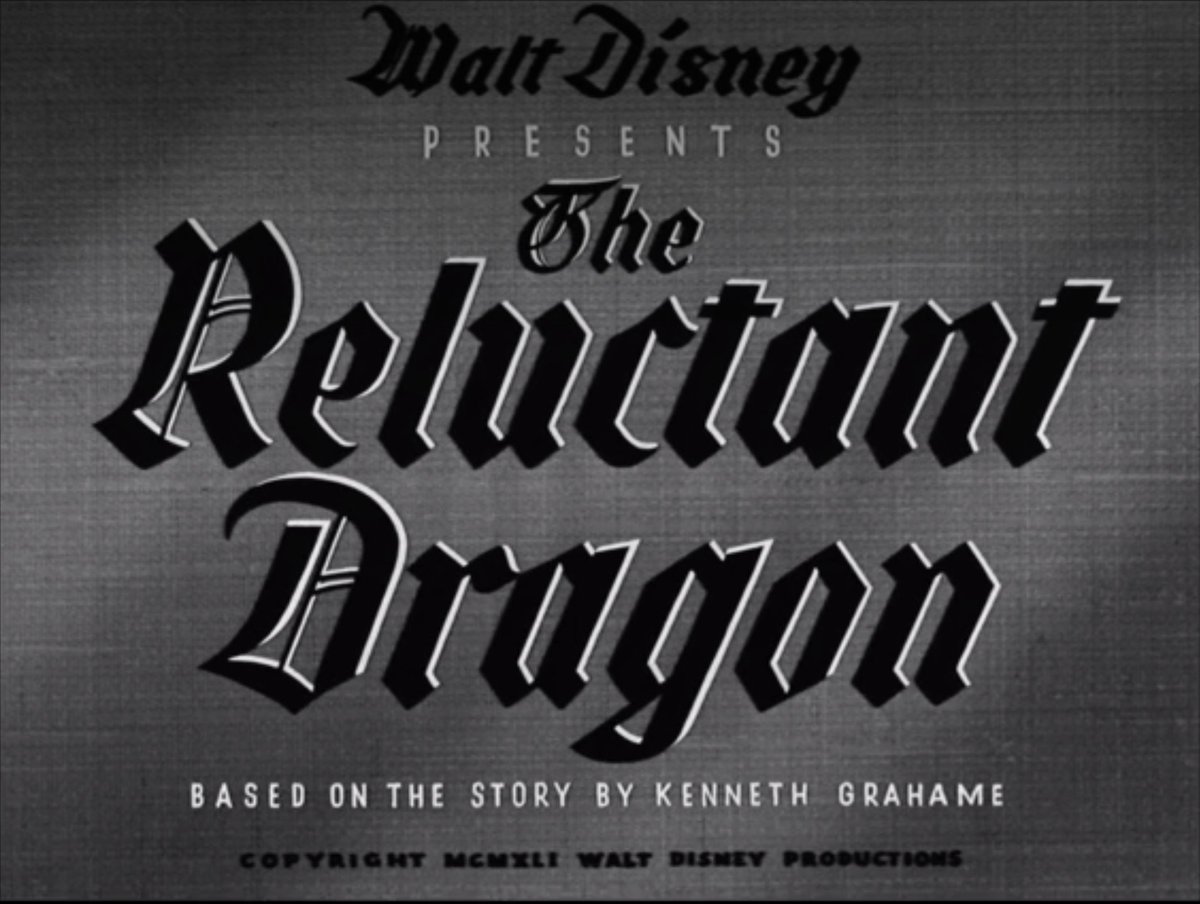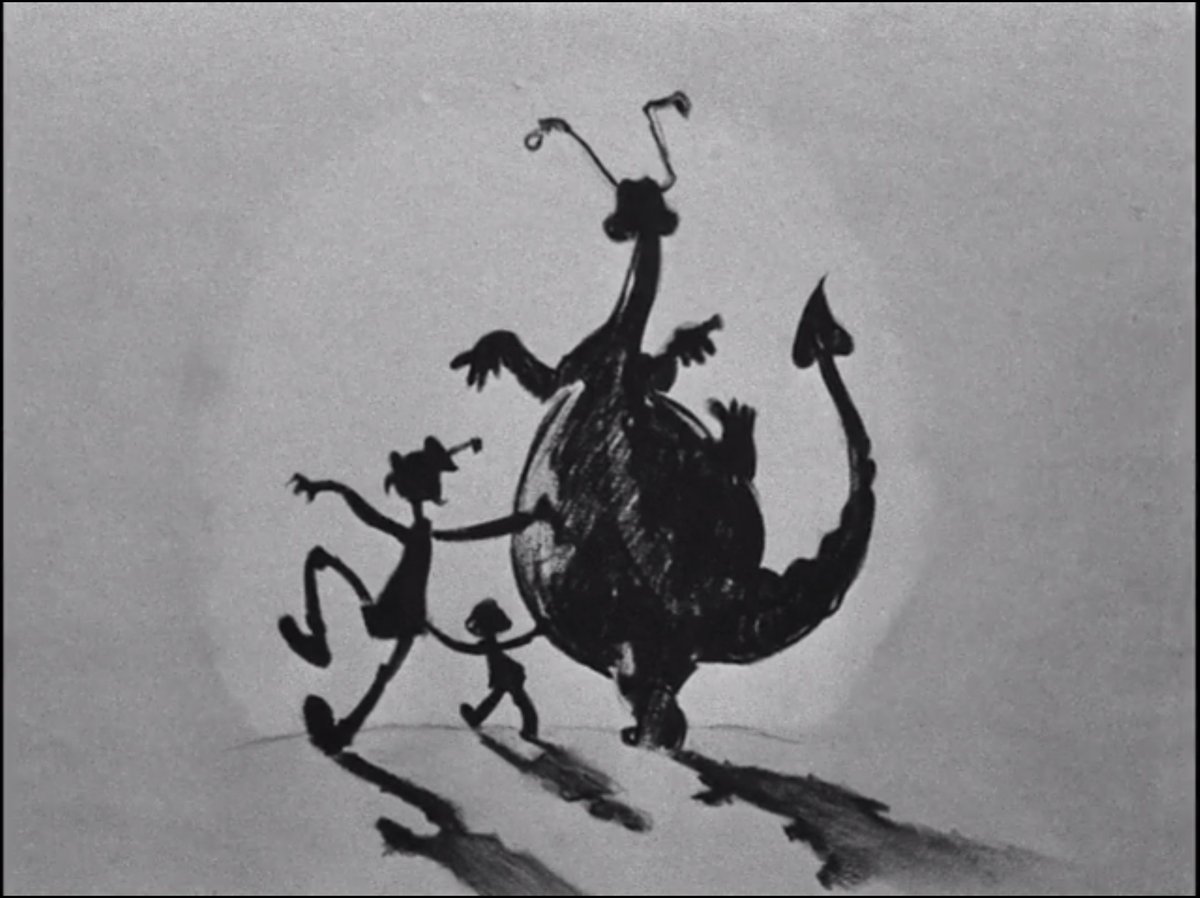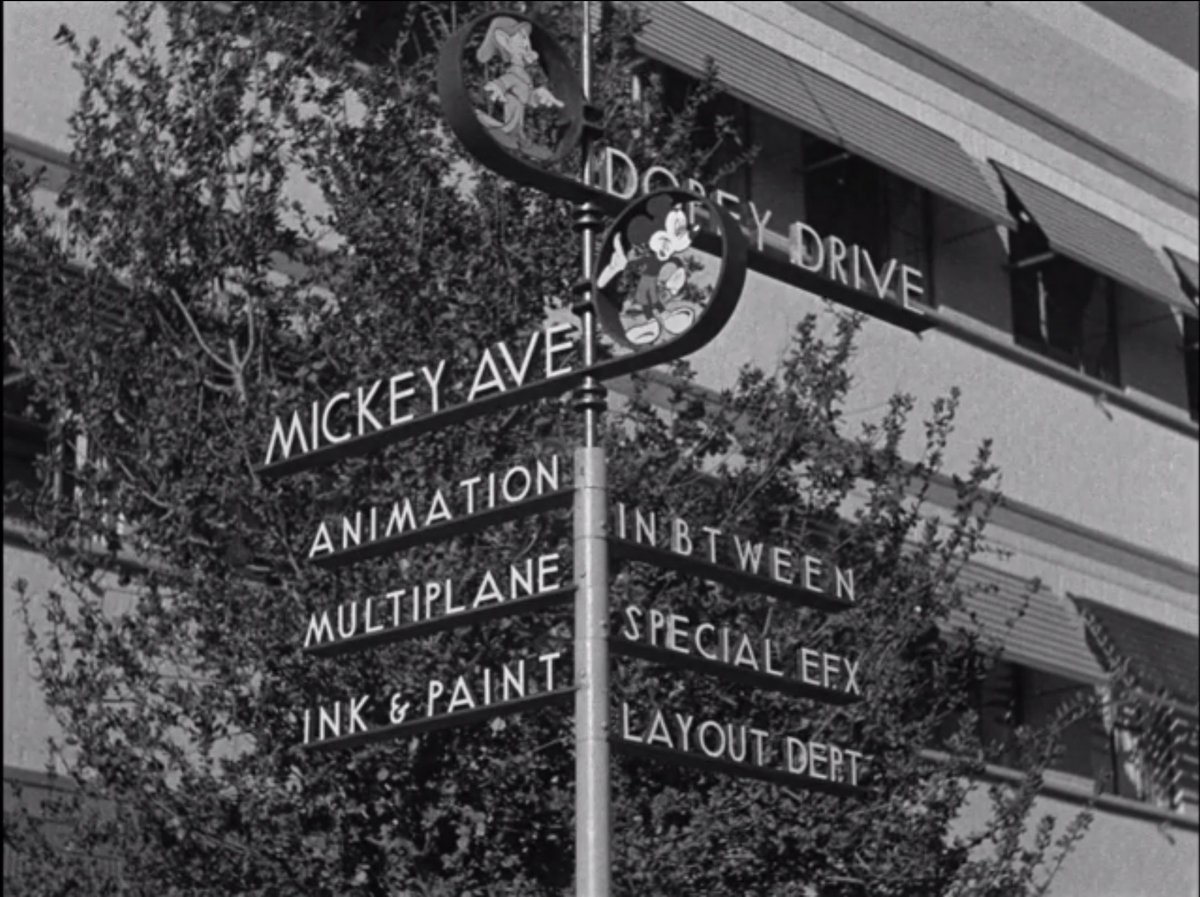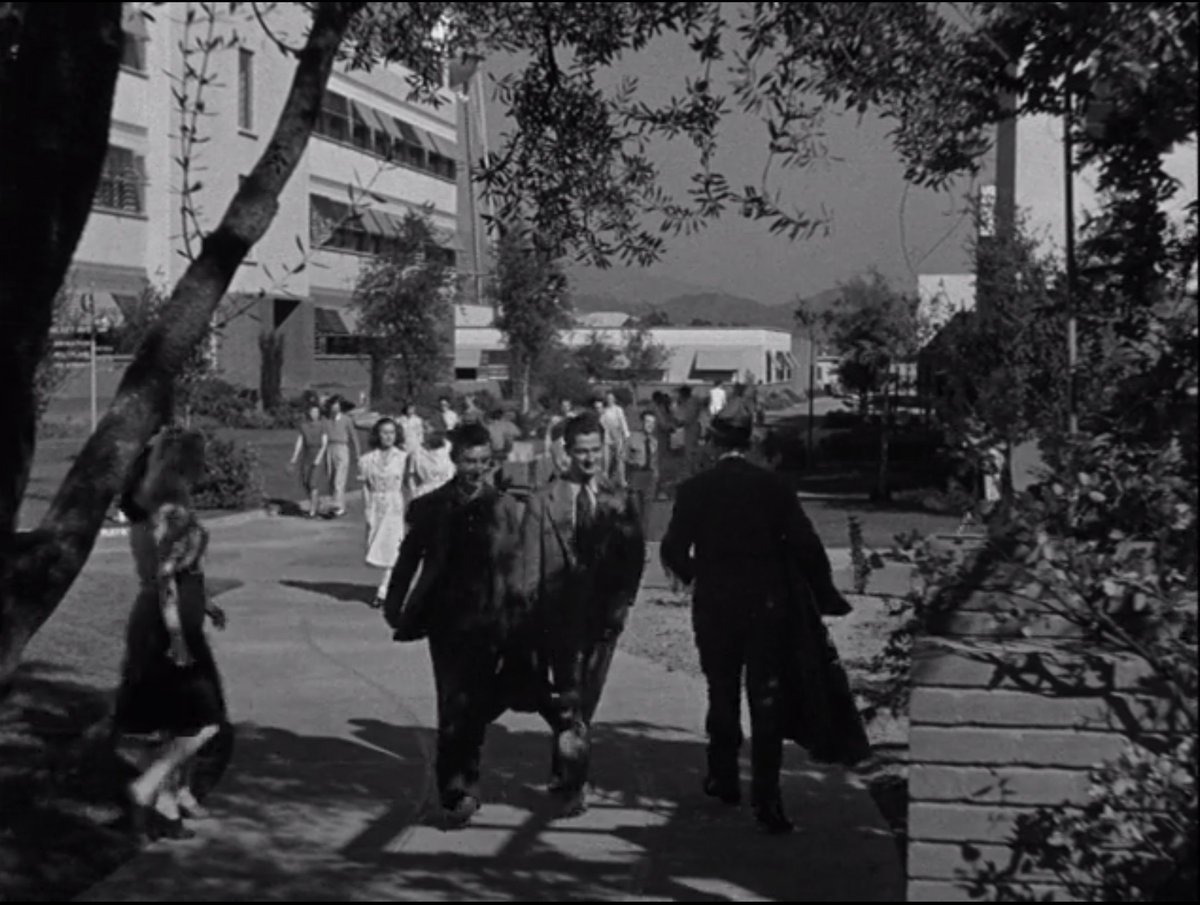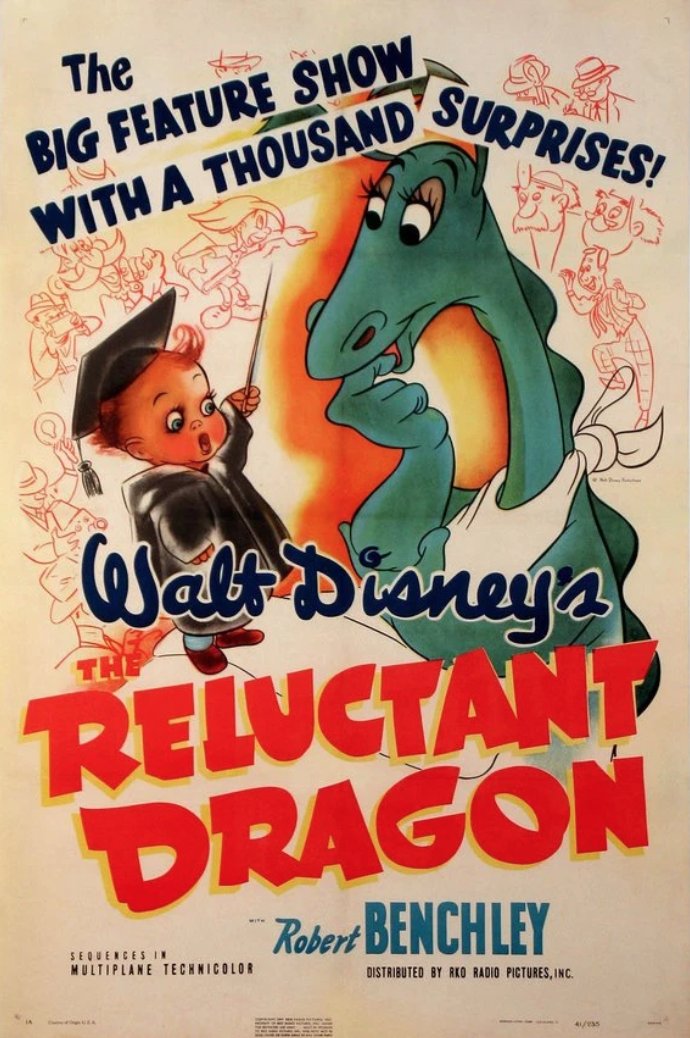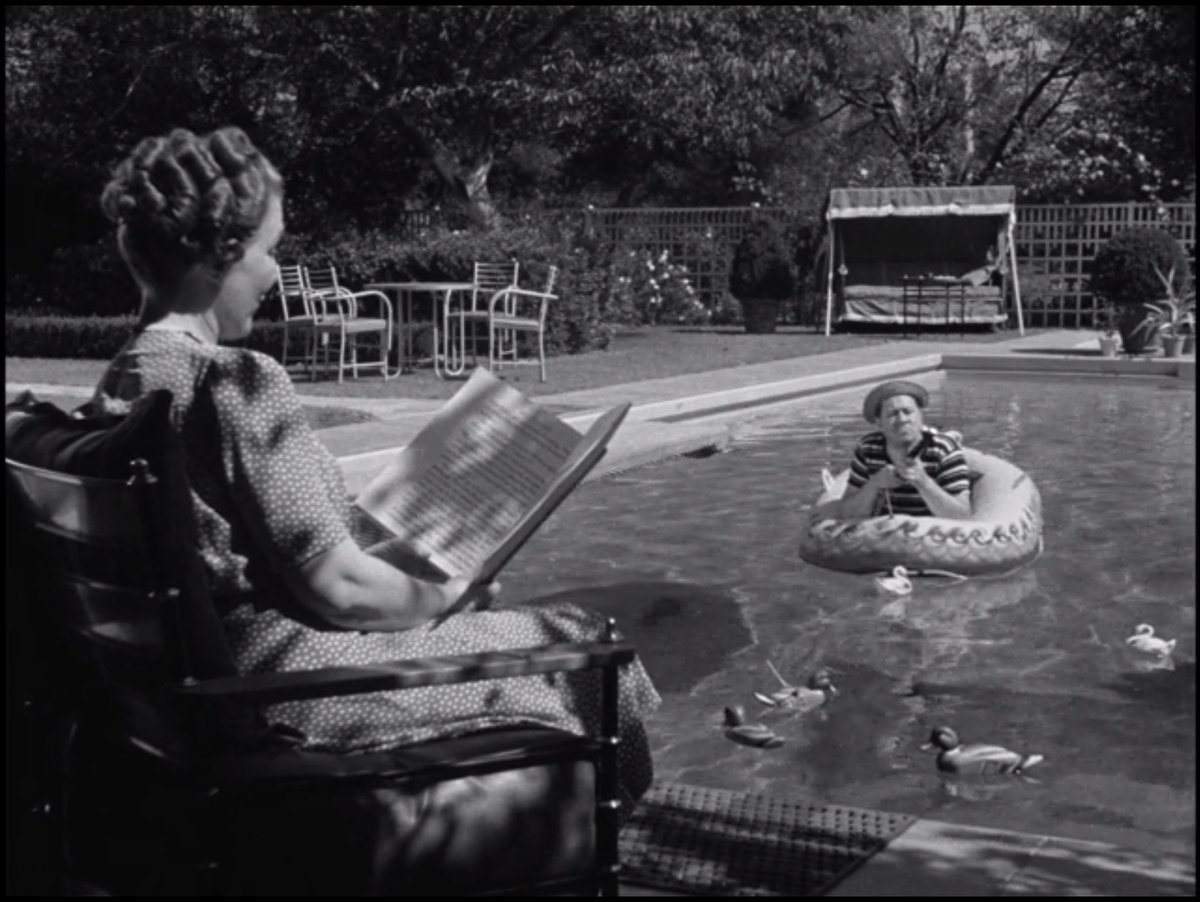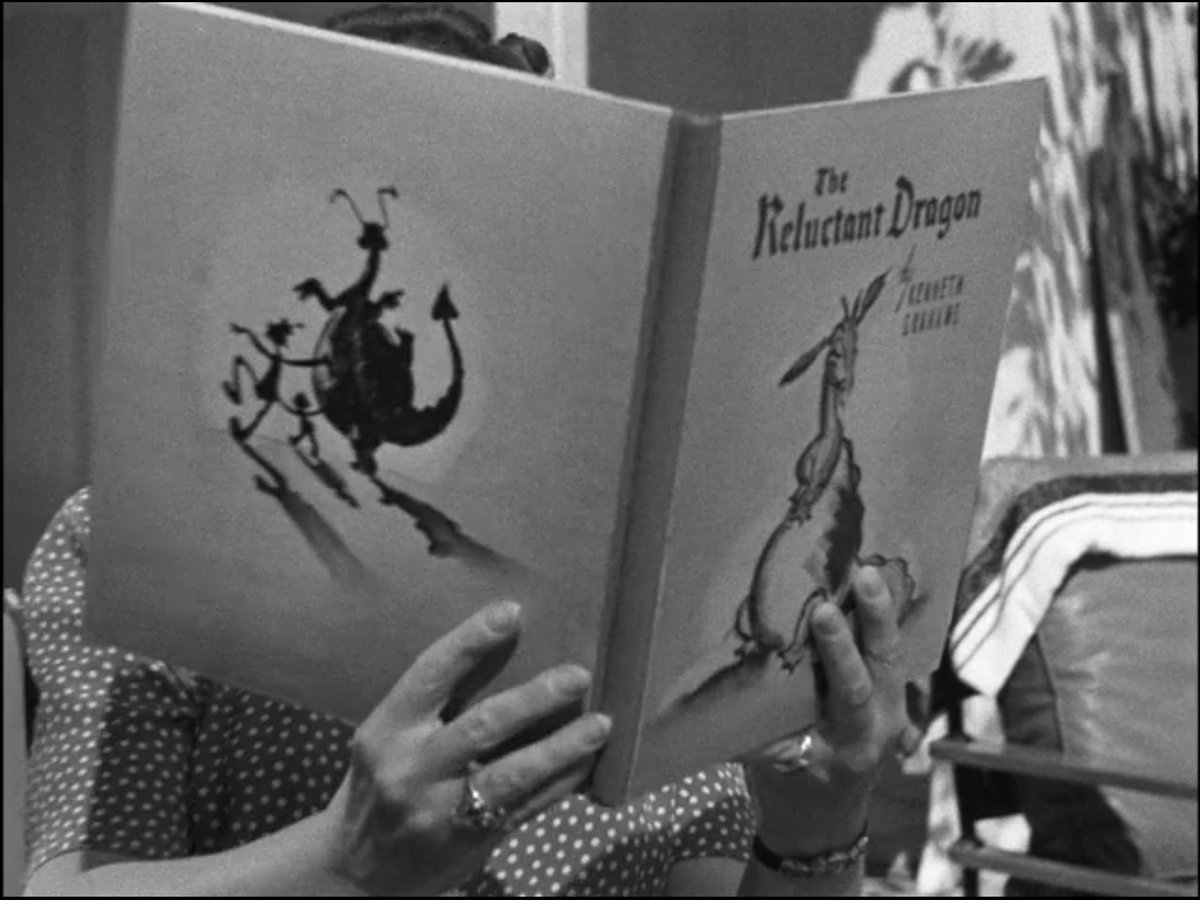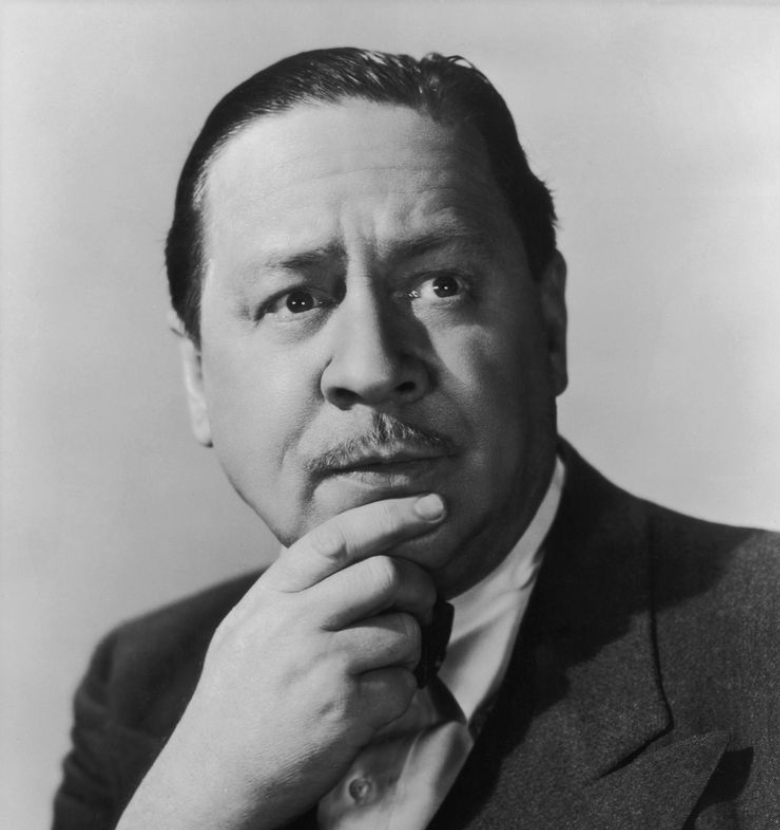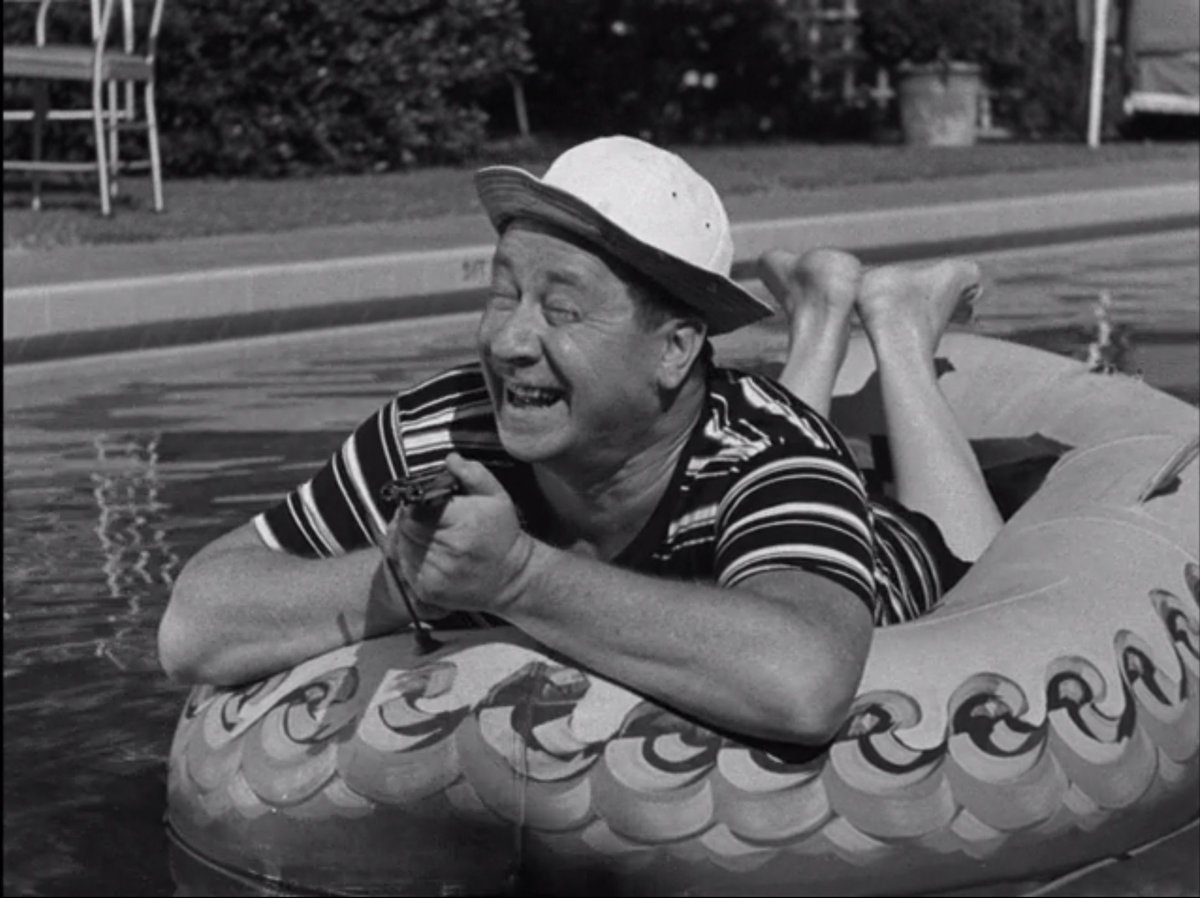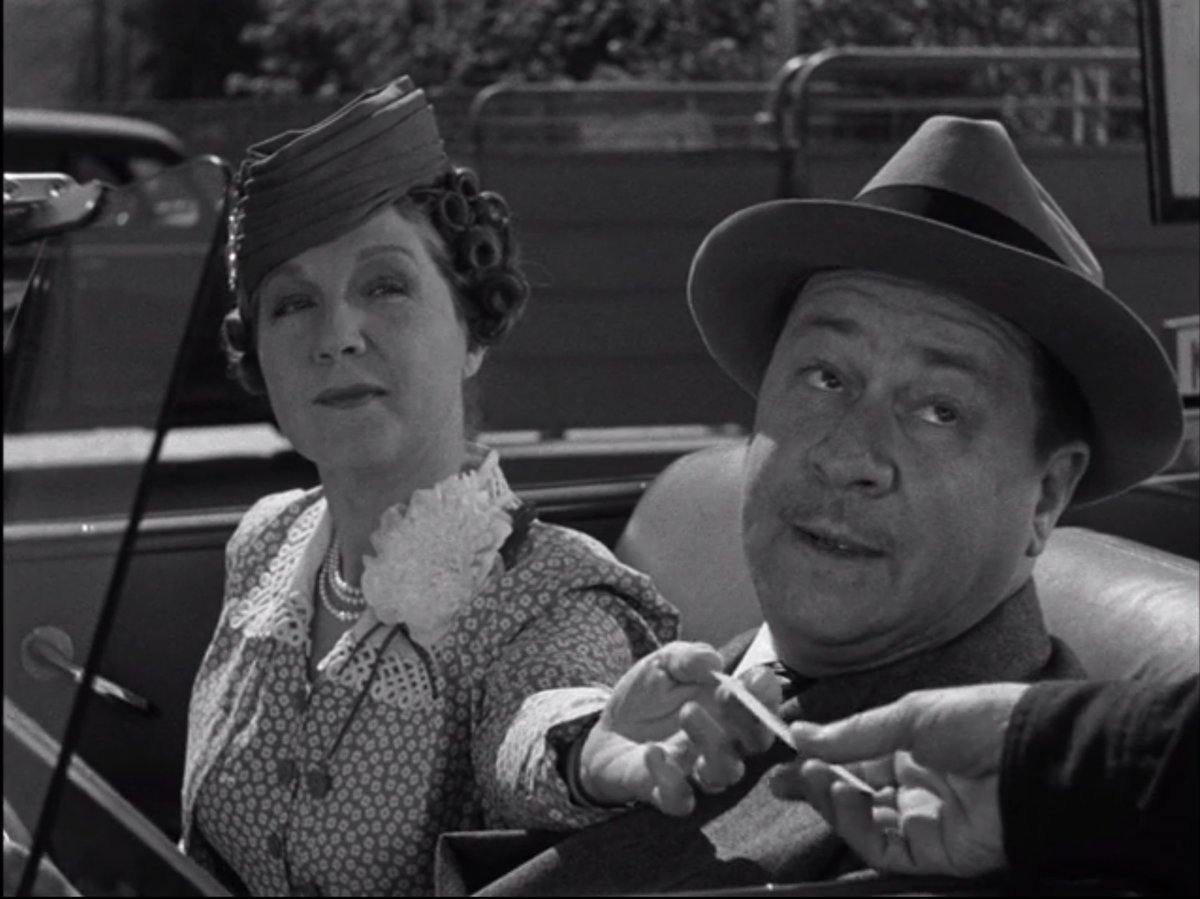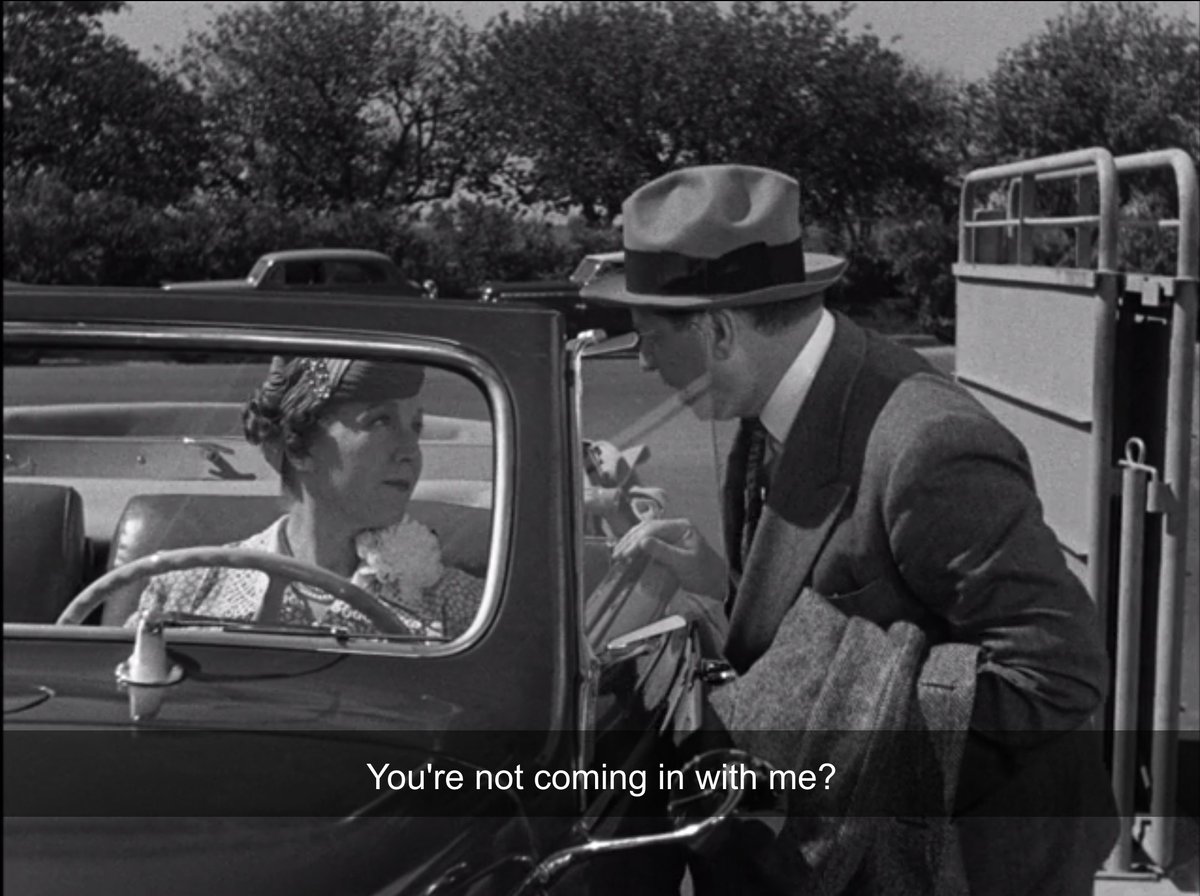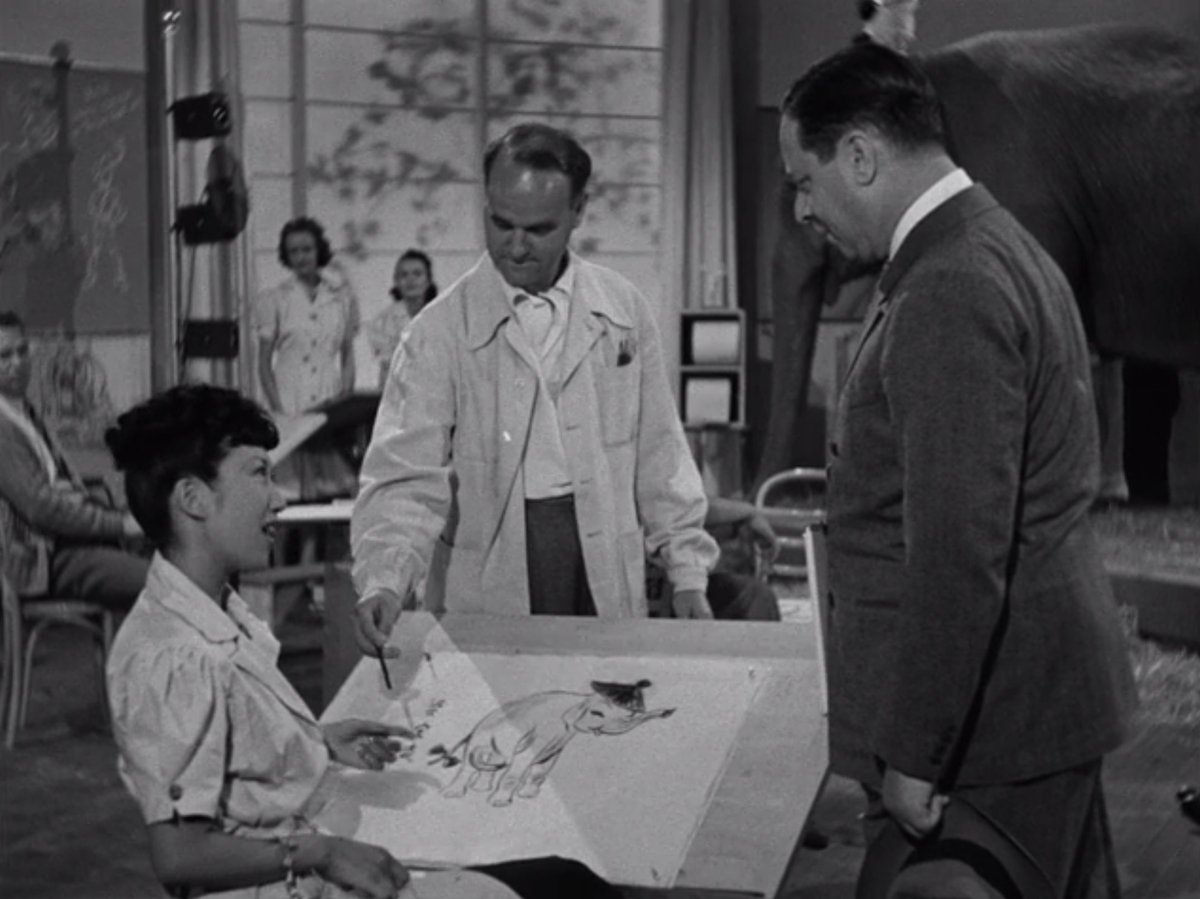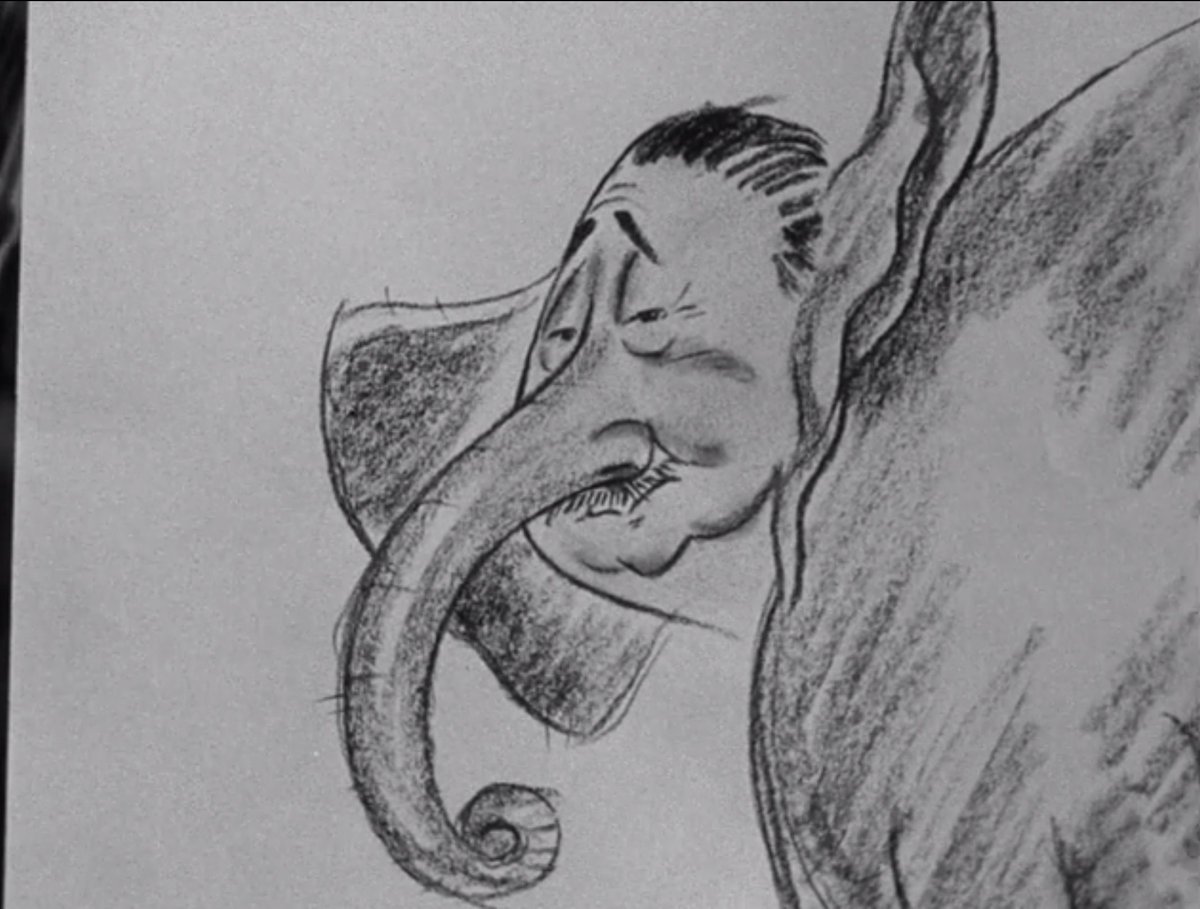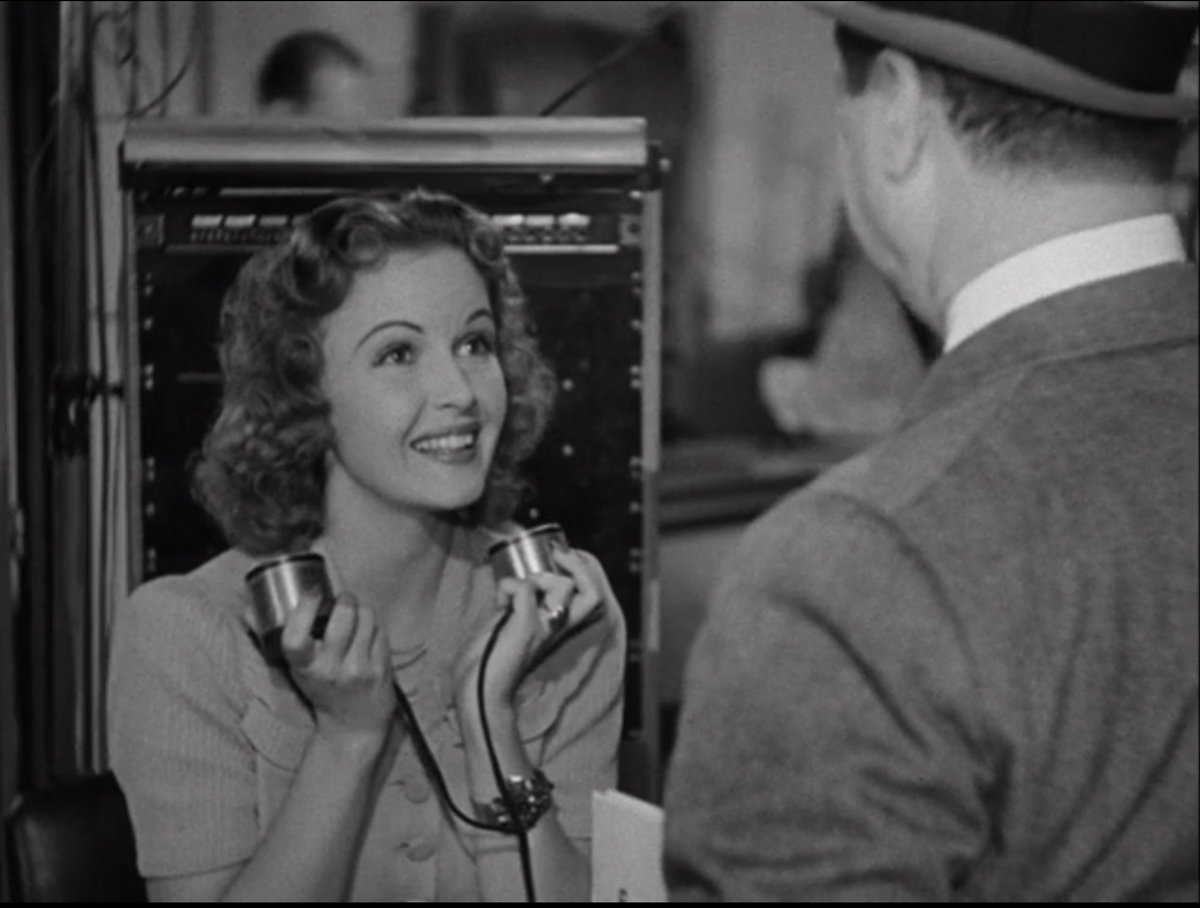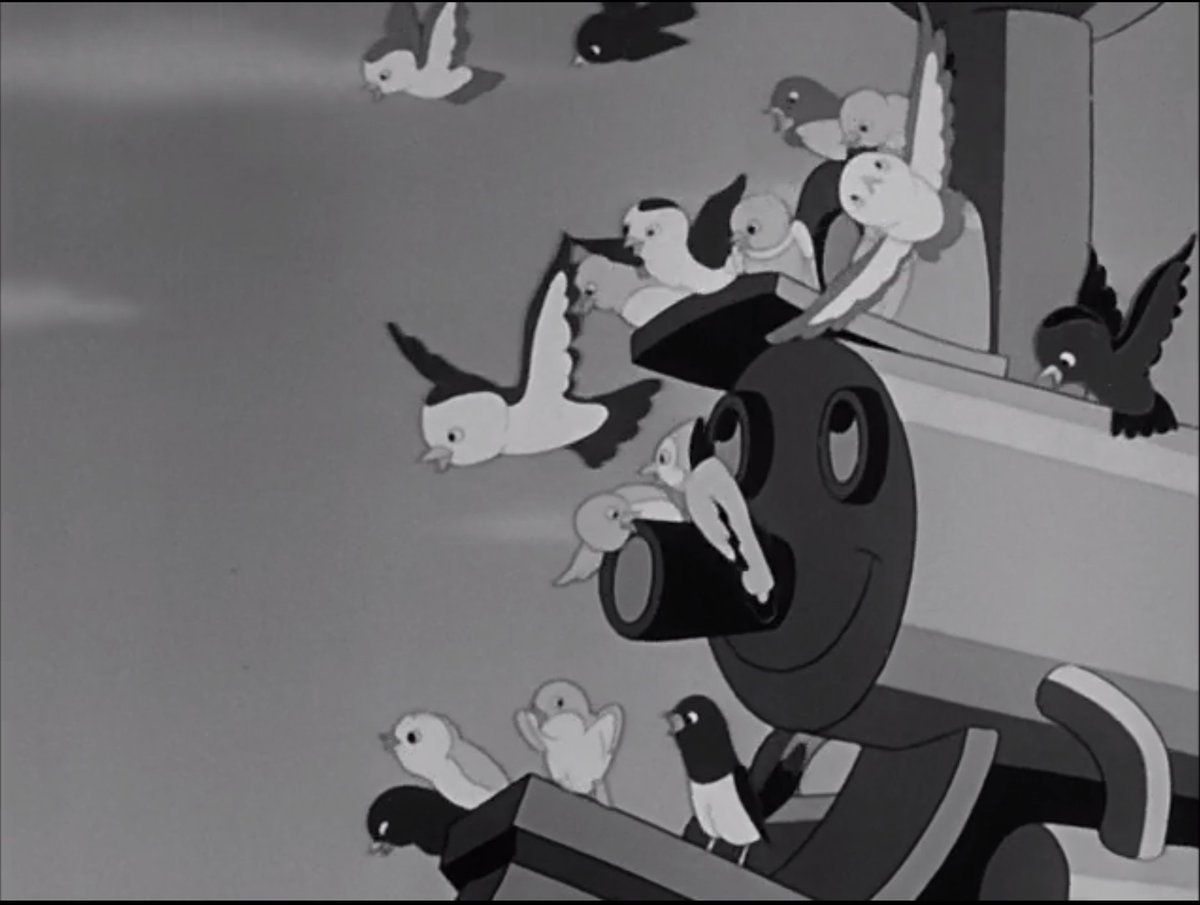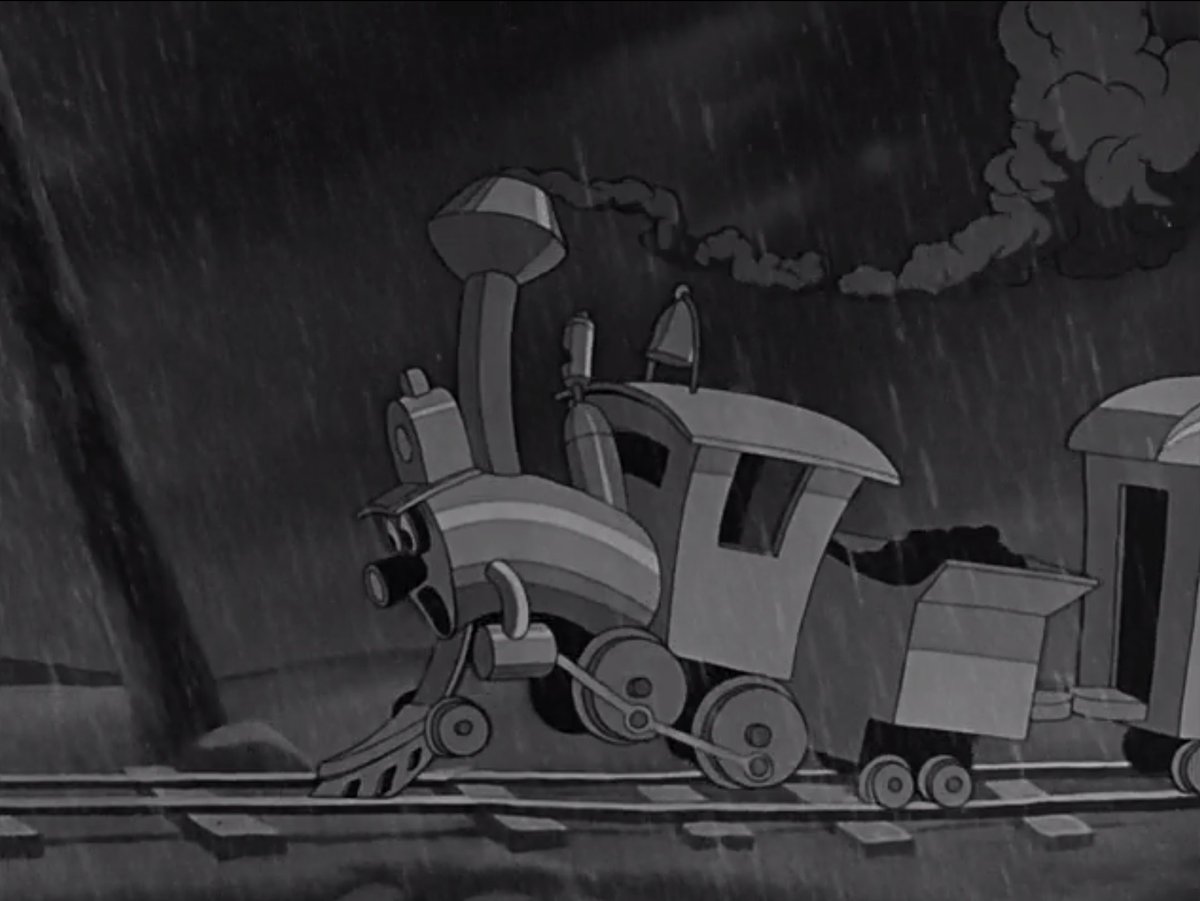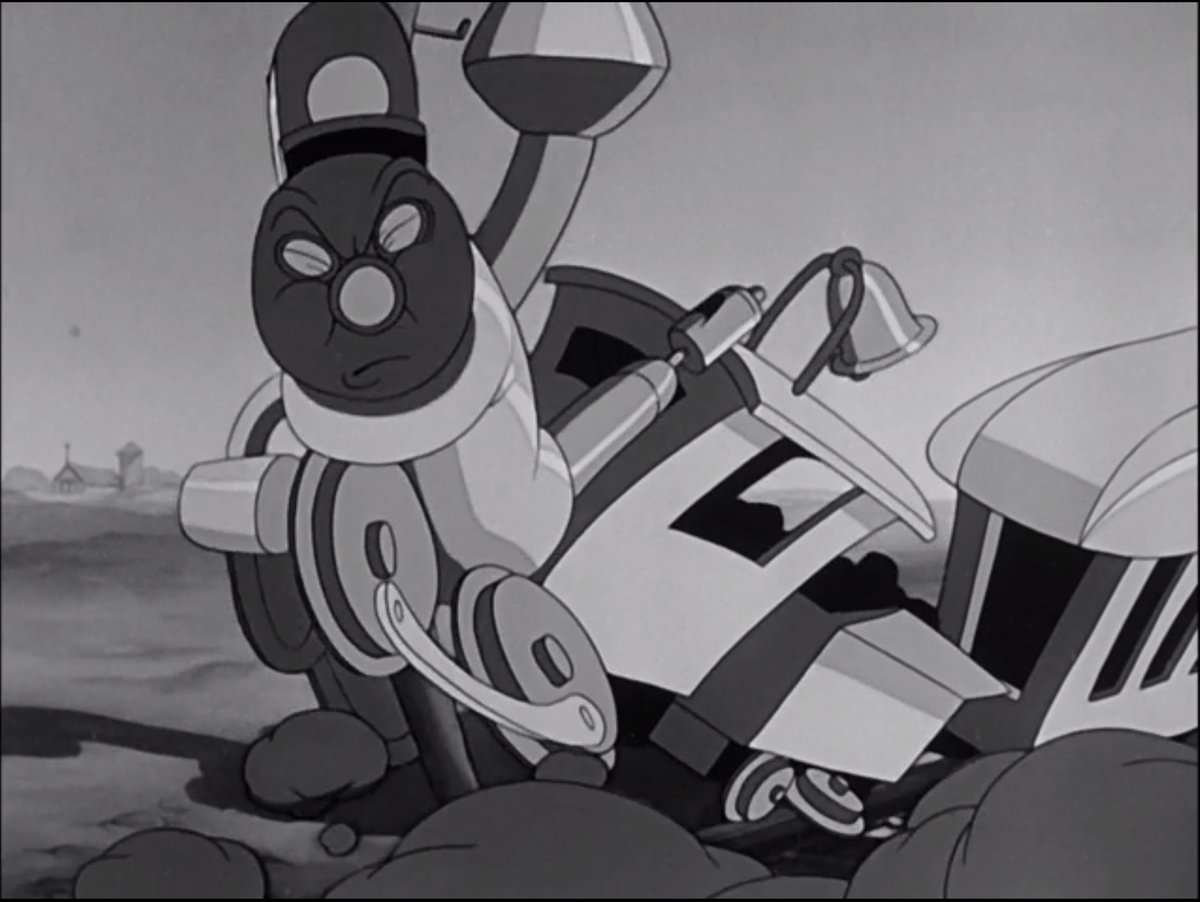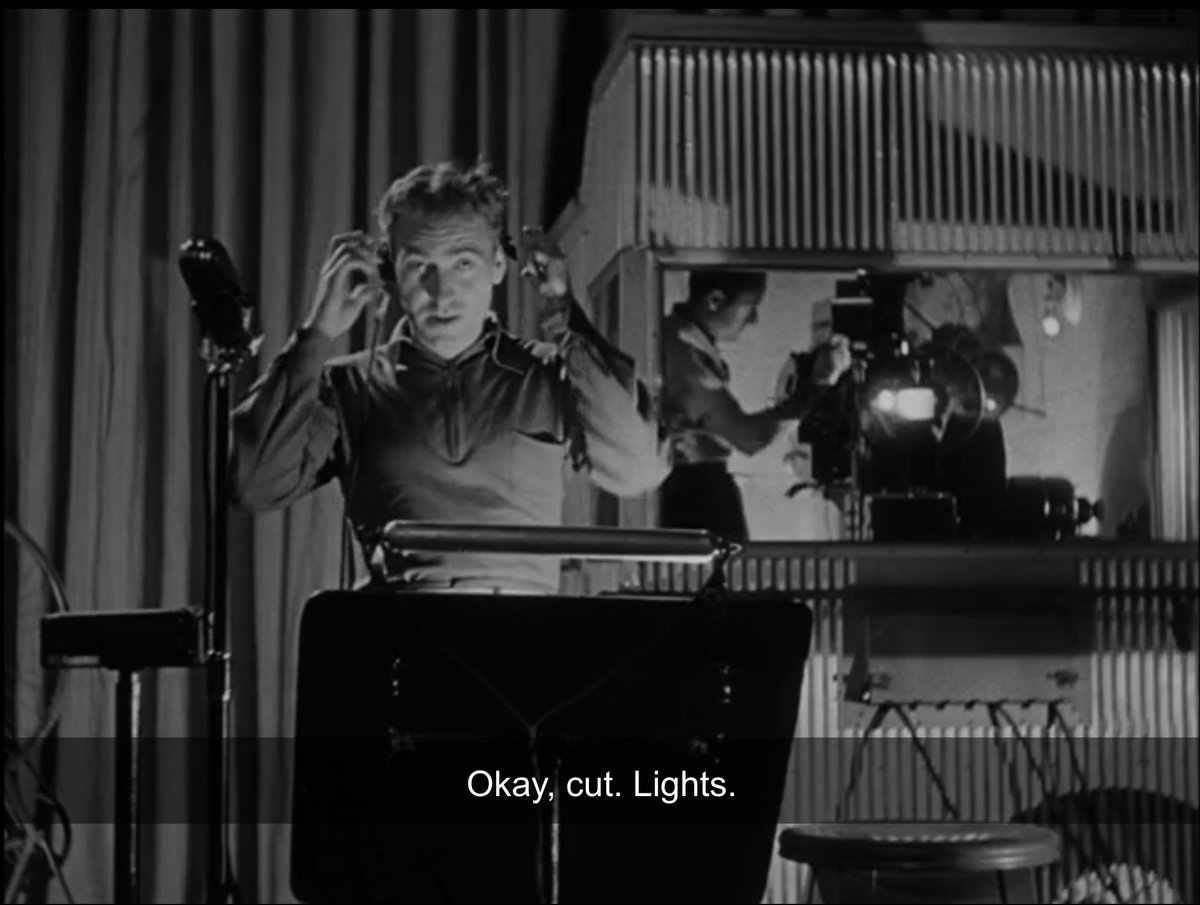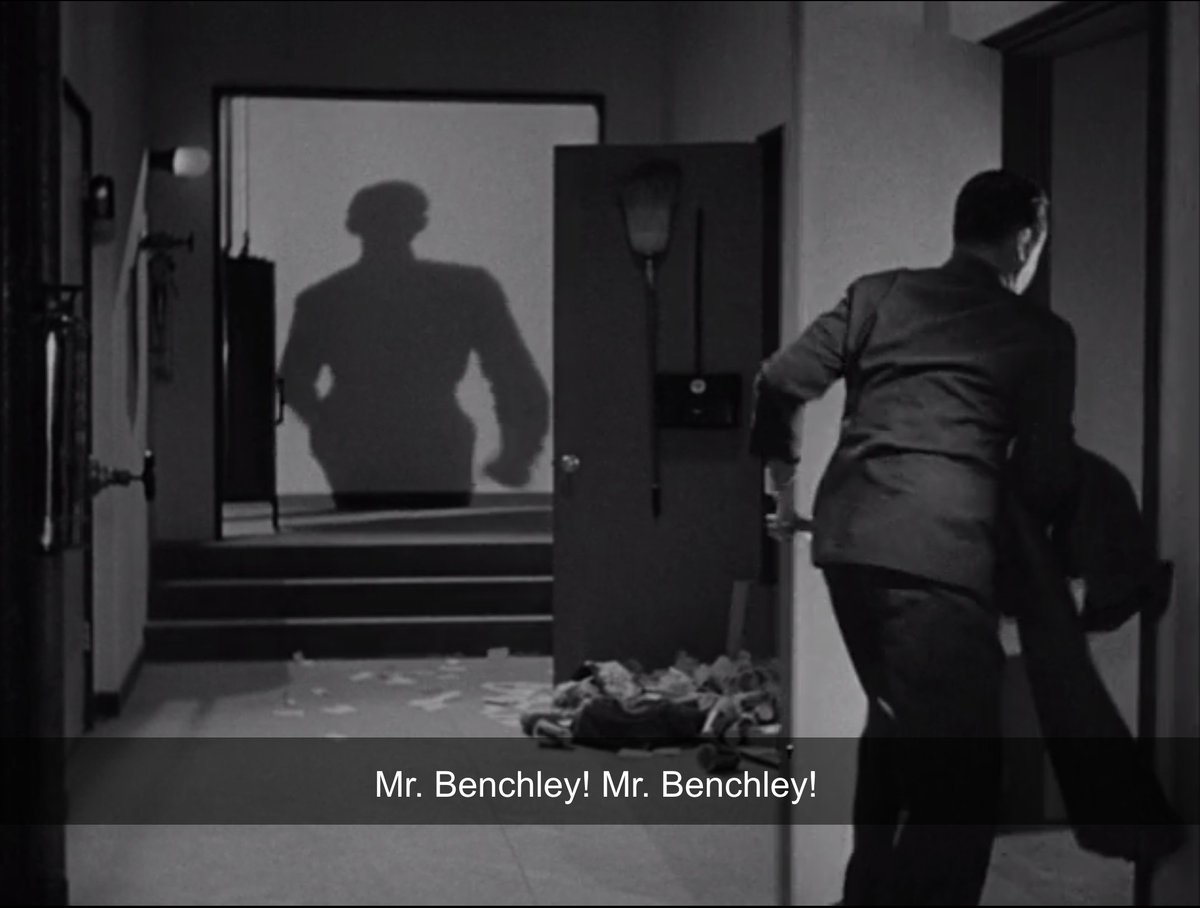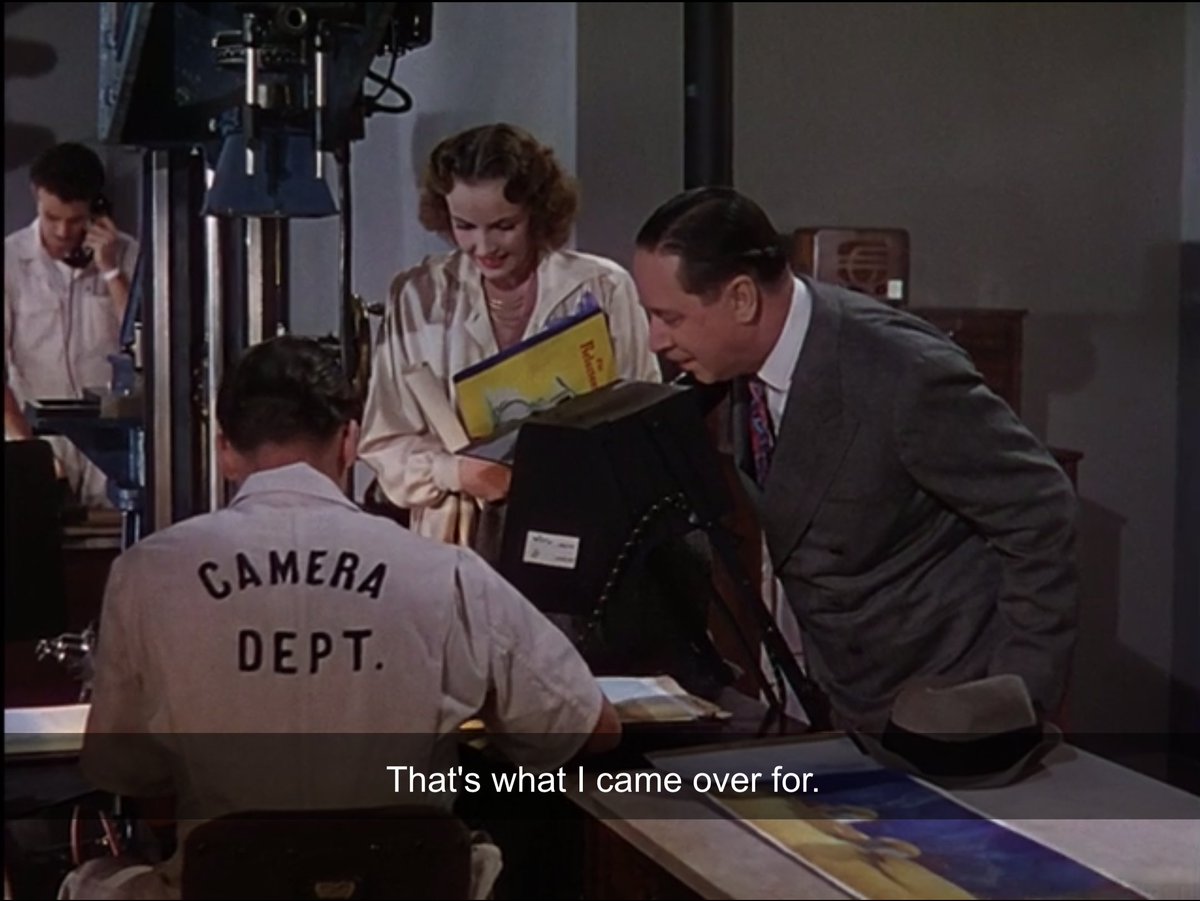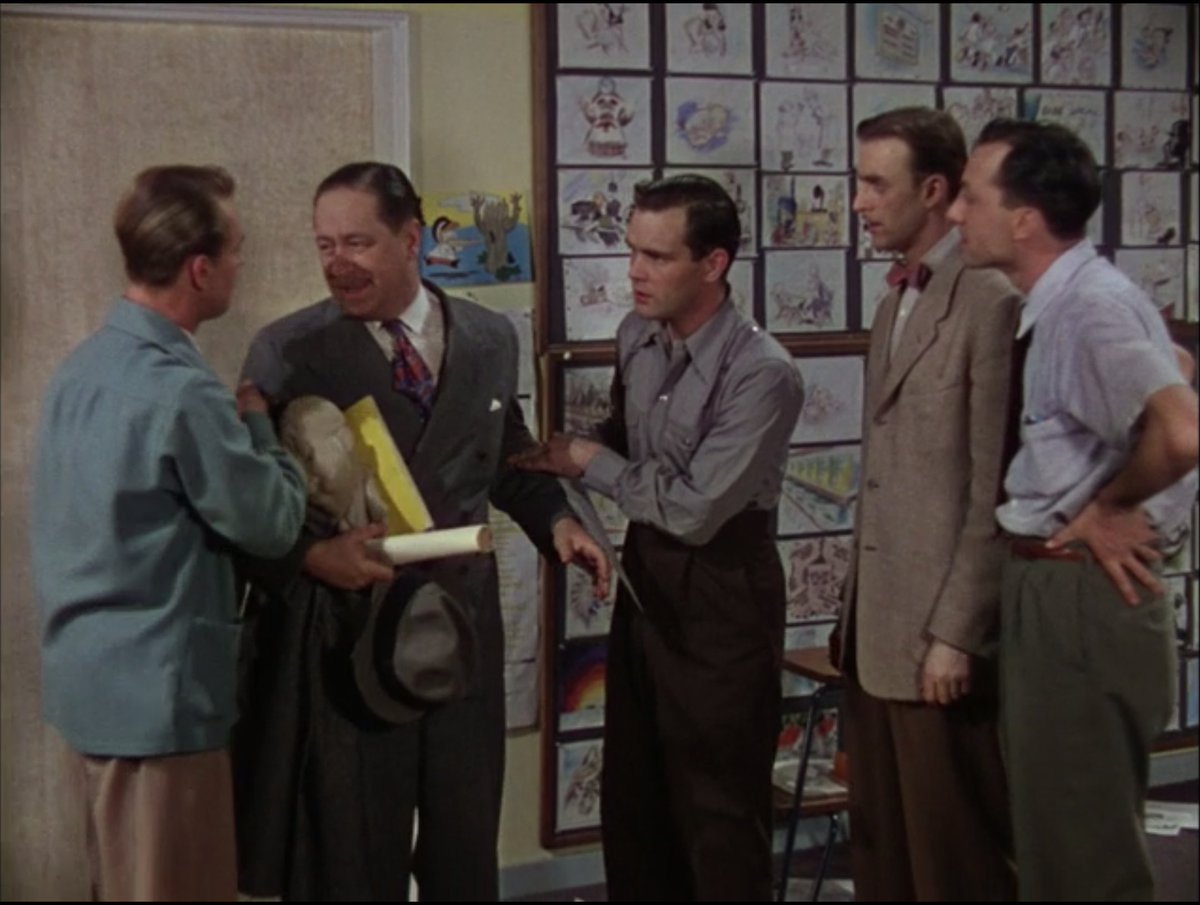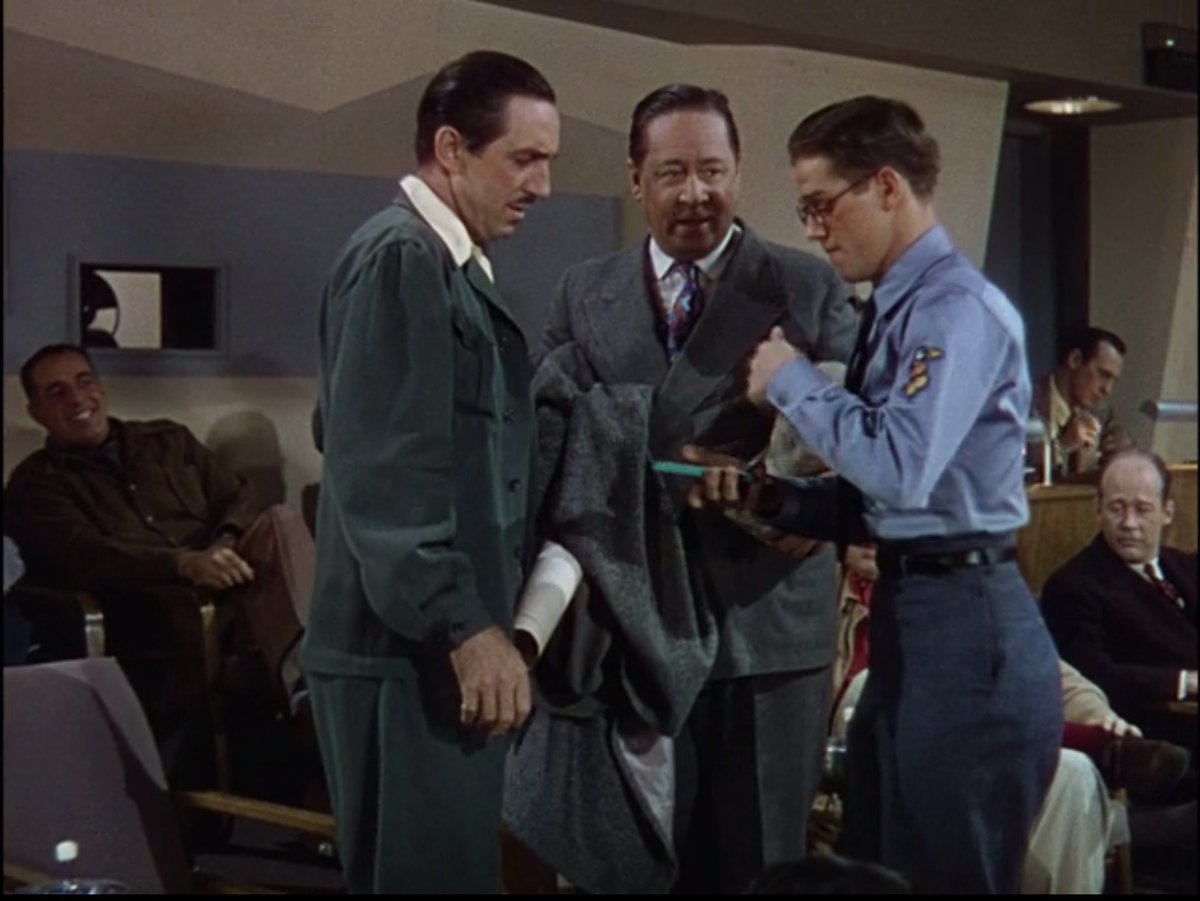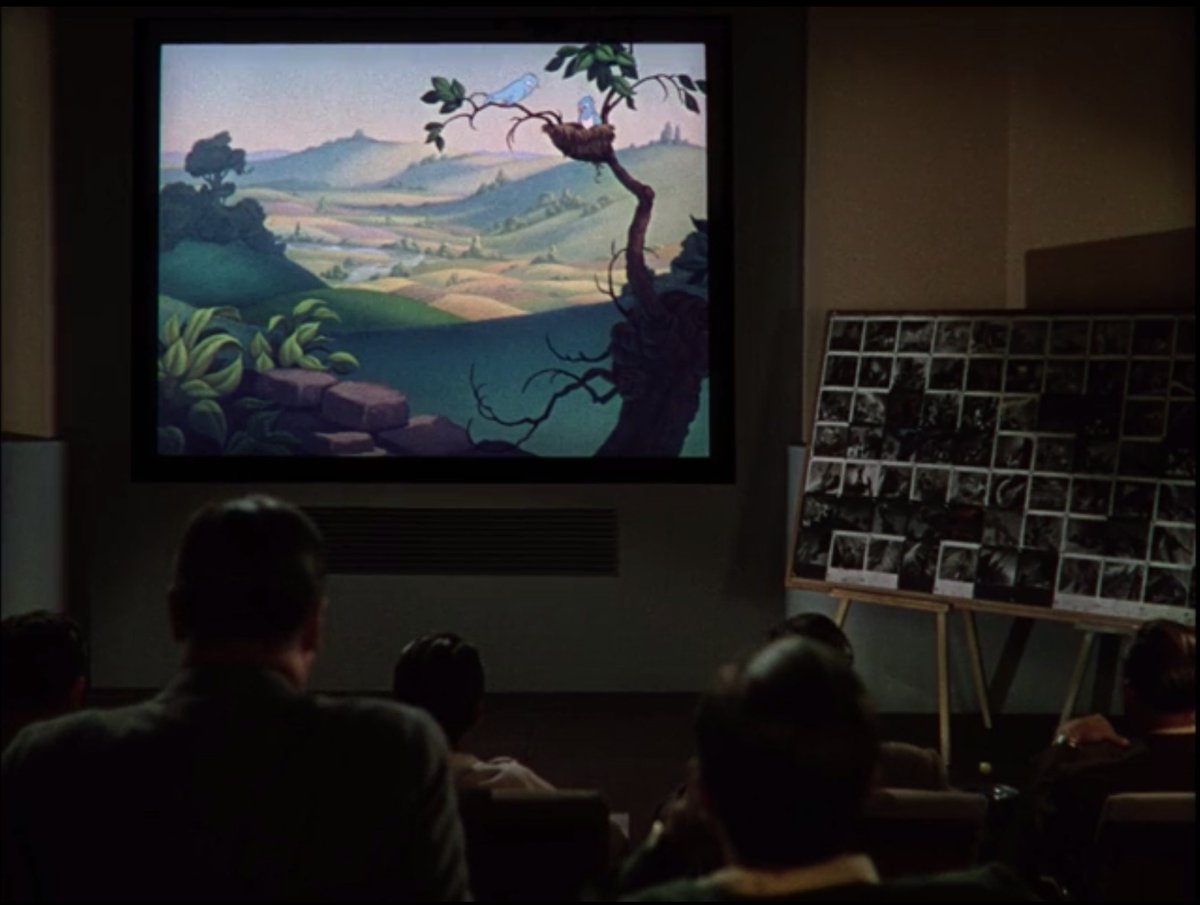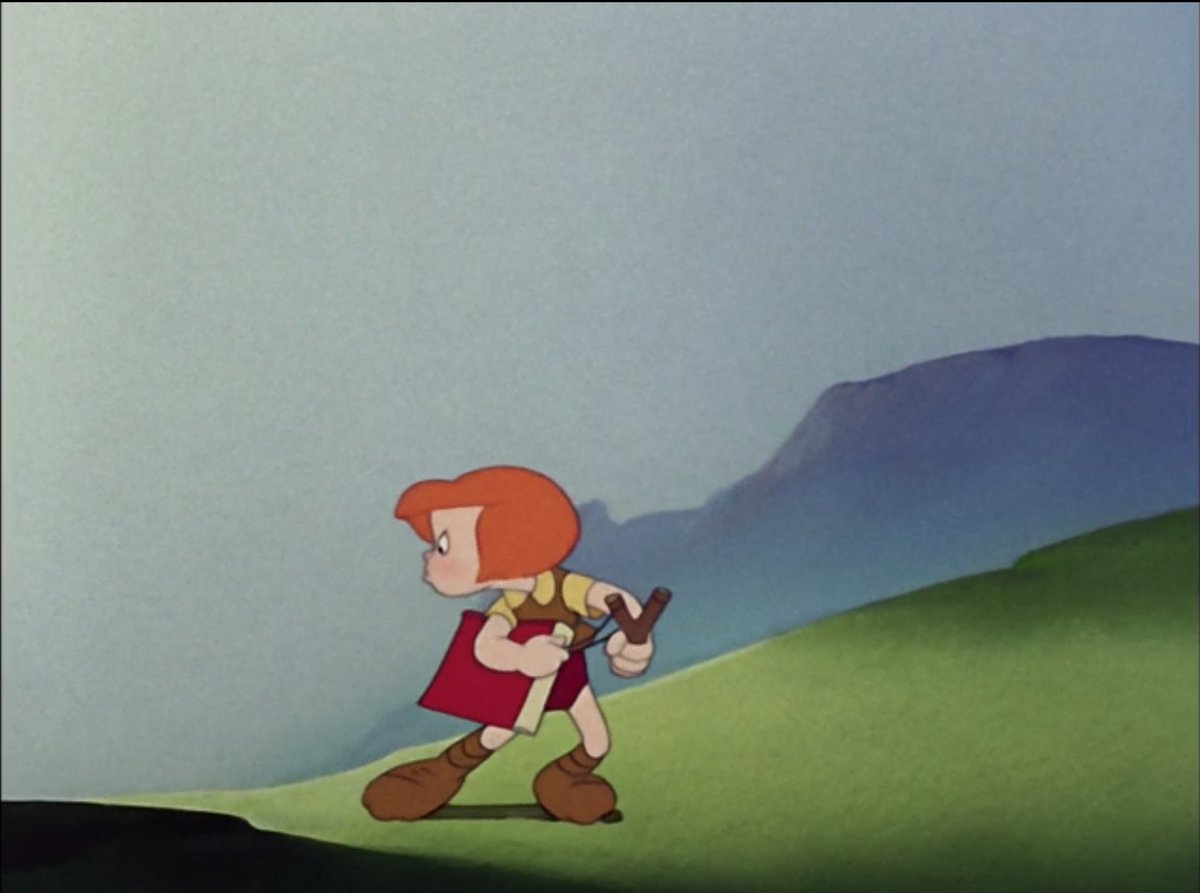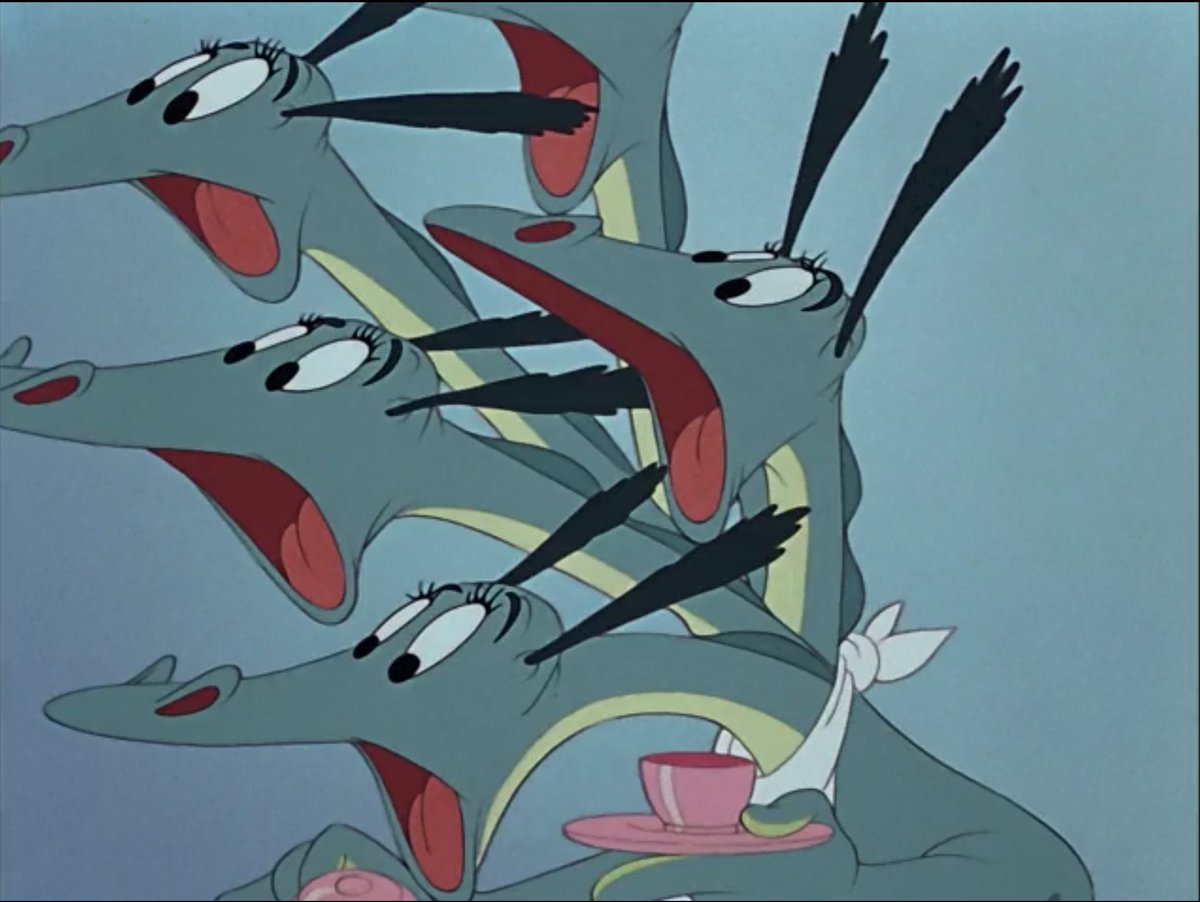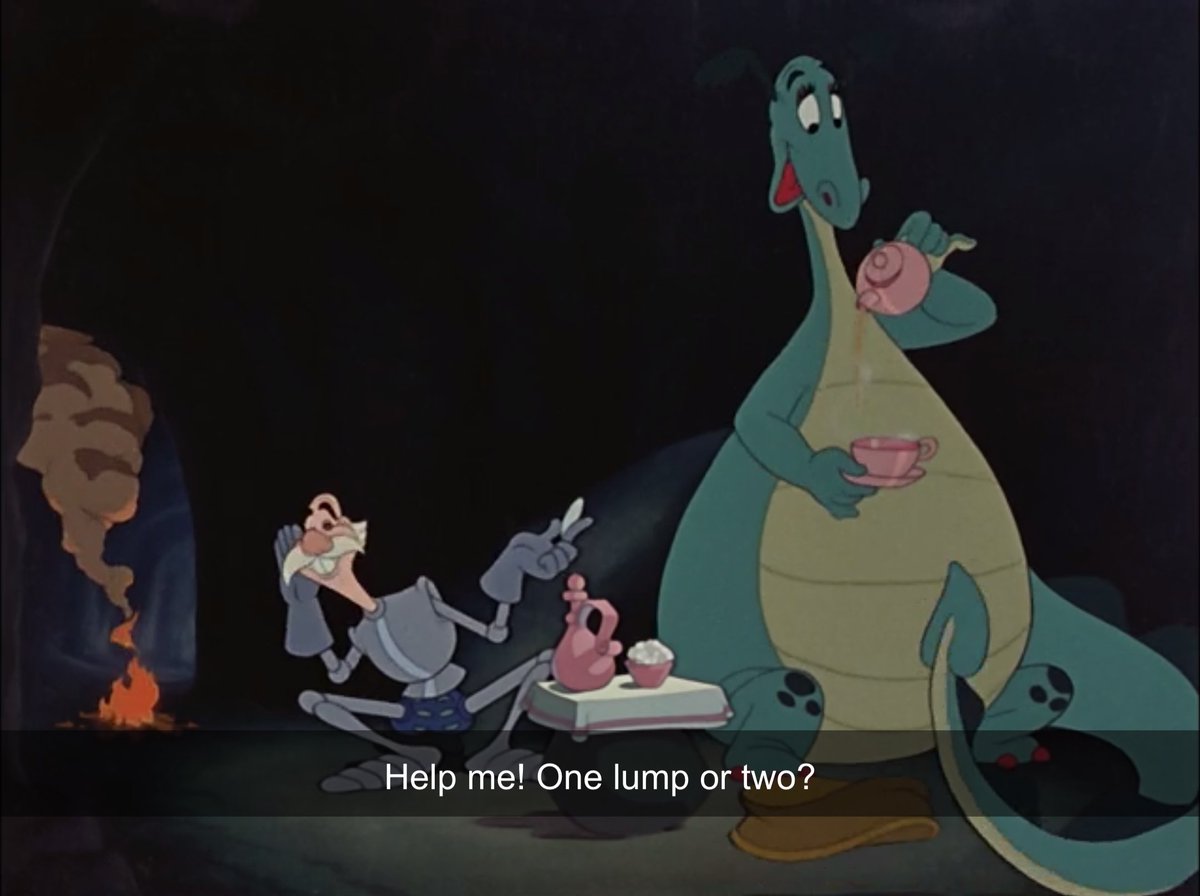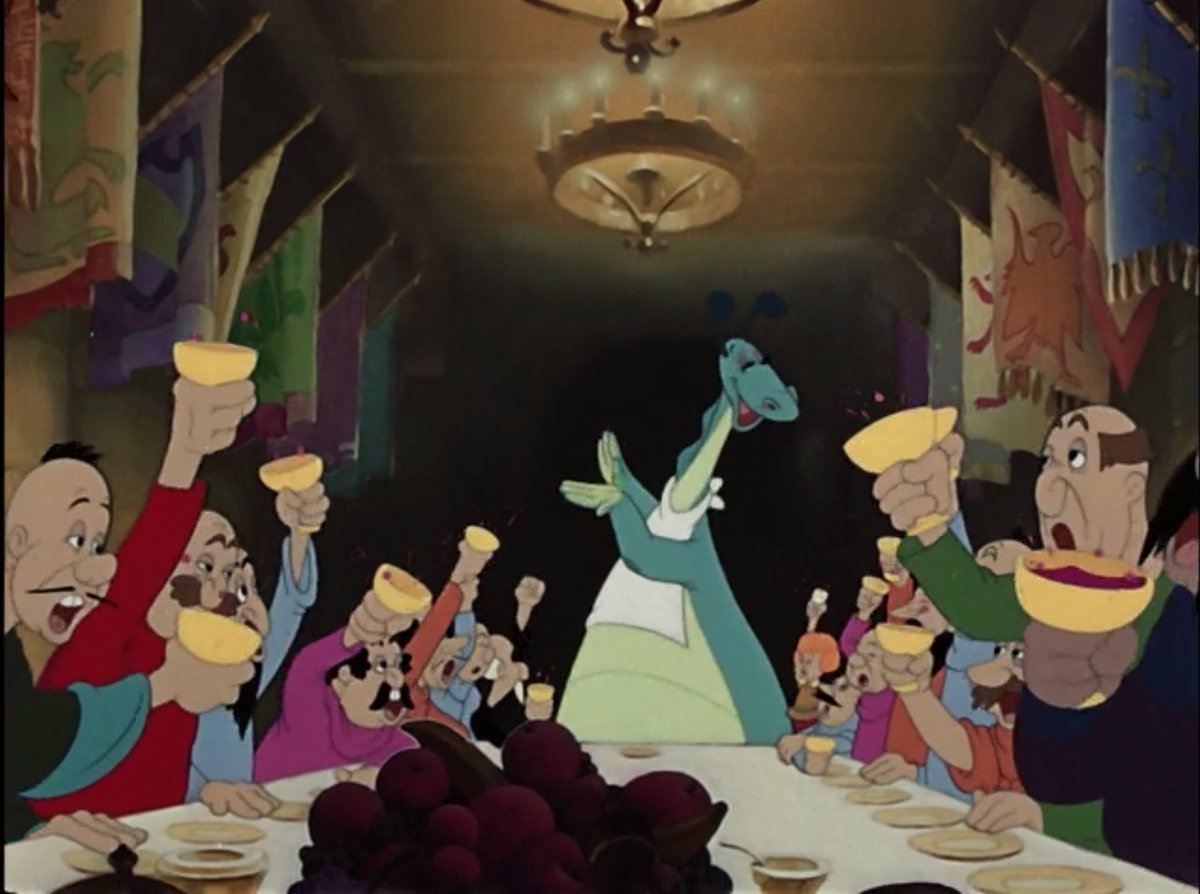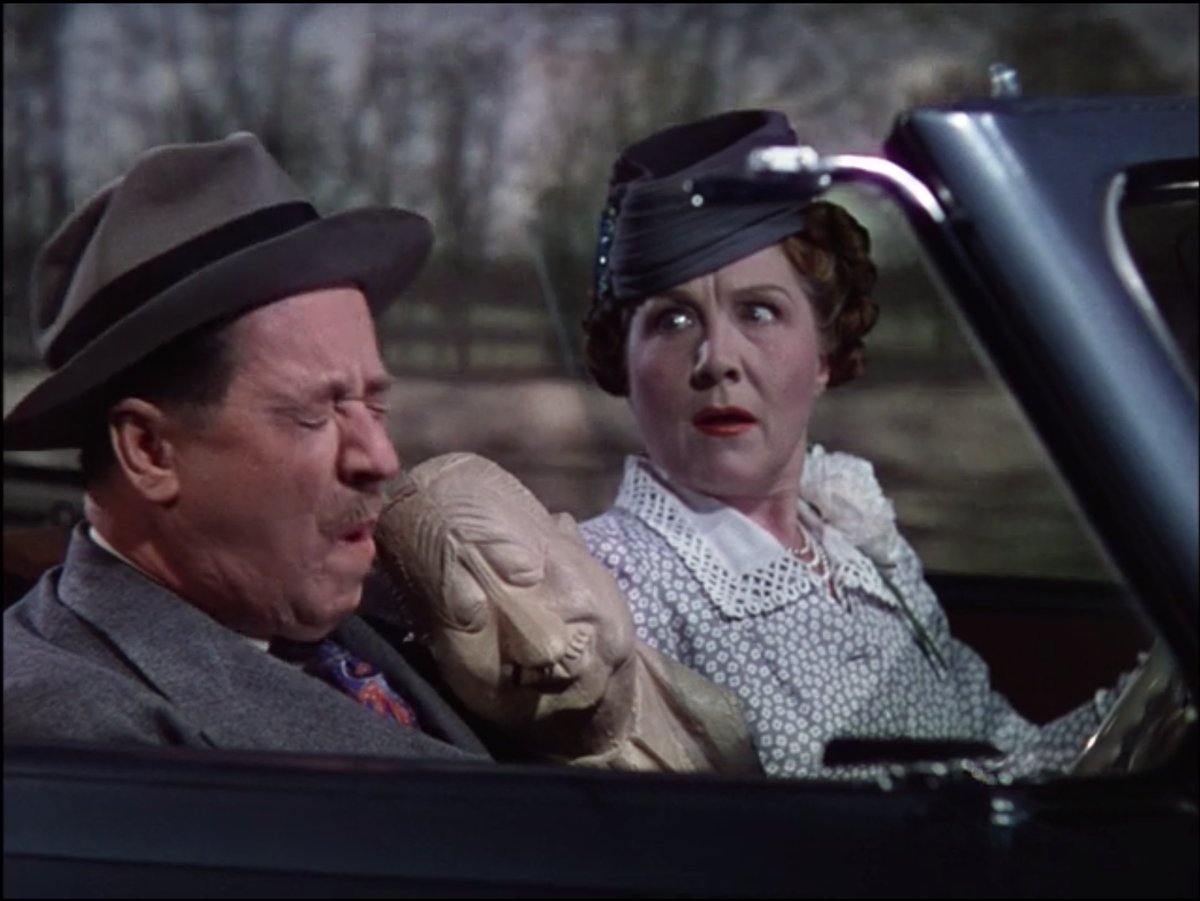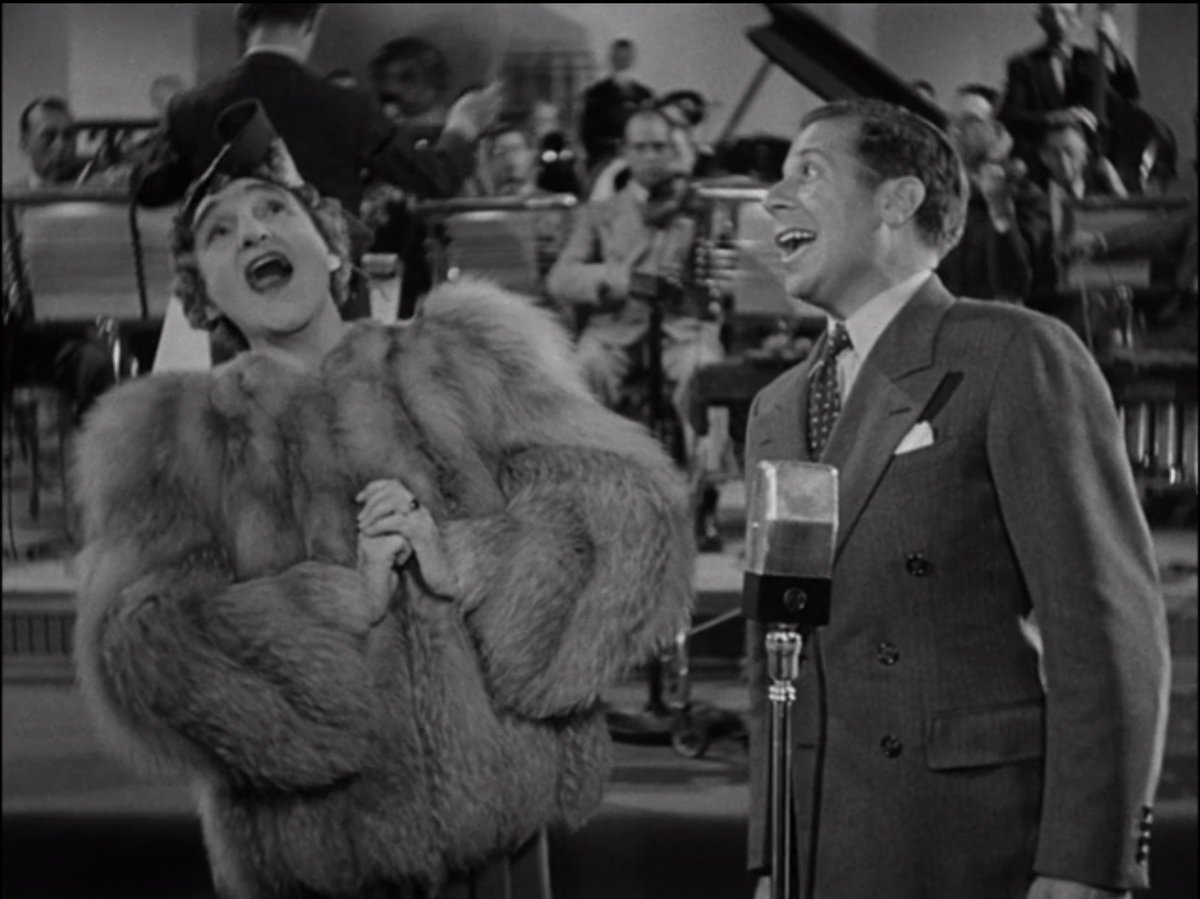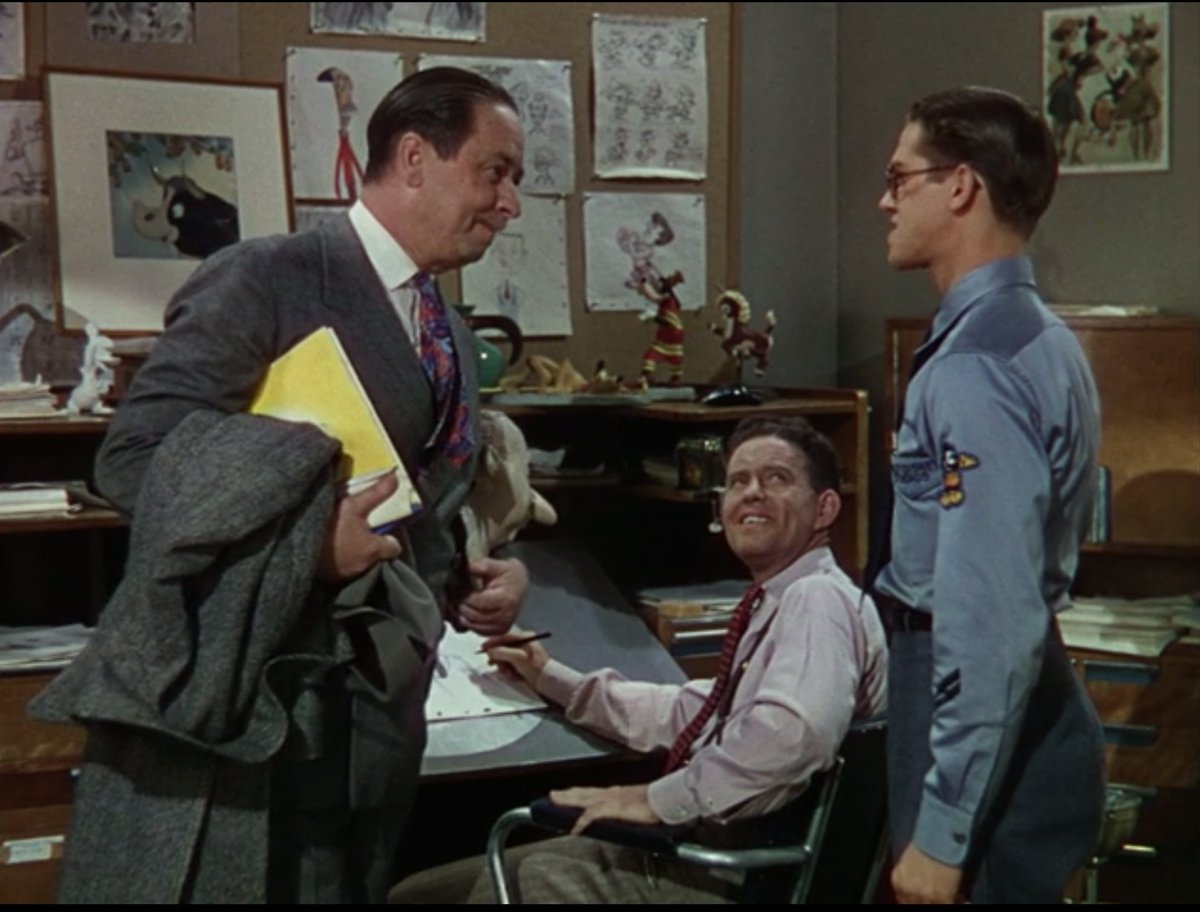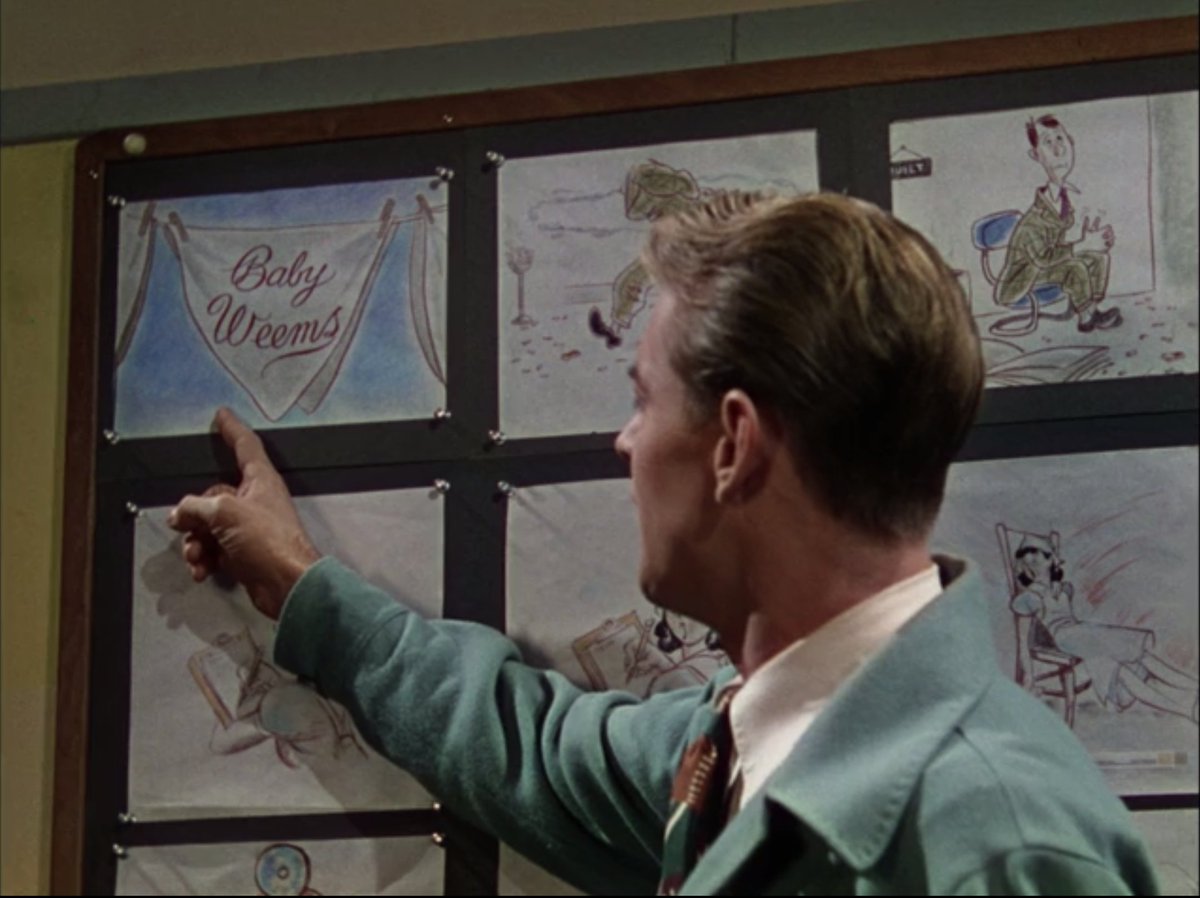"David+Disney" Episode 4: "The Reluctant Dragon" 1941. Okay, chums! Time for a change of gear, for us and for Disney too. After three films pretty much accepted to be classics of the genre, I& #39;m actually kinda looking forward to digging deeper into something, um, less so...
So, we& #39;re still about two more films away from what is considered Disney& #39;s "package film" period, where the constraints of WW2 and underwhelming returns forced them to fall back on a scaled-back business model: anthologies of cheaper shorts padded out to a feature runtime...
Though a little early, "The Reluctant Dragon" could certainly be considered the first of this era, also establishing the trend of framing these short animated segments with live action material providing a loose (and I say LOOSE) framing structure, building to the longest short.
One of the first things that jumped out to me was that I loved the use of caricatures accompanying the crew& #39;s names in the credits (most clearly drawn by the artists themselves). But, as quaint a detail as this is, it unknowingly alludes to a larger context surrounding this film.
You see, this film is framed as ostensibly a "behind the scenes" peek into the studio, and yet there& #39;s a reality it (literally) papers over: It was released during the 1941 Animator& #39;s Strike! The US wouldn& #39;t enter the war til later that year, but Walt was waging a war of his own.
Scenes shot in Disney& #39;s real-life Burbank facilities depict a harmonious studio of enthusiastic workers, when that year would actually see a large contingent of Disney& #39;s staff demonstrating outside. They would even picket the premiere with signs reading "The Reluctant Disney"...
Walt& #39;s rule of not fully recognizing his crew (he claimed he wanted the credits to be short and to maintain a sense of "magic" for the audience), unfair business practise, wage disparities and accusations of favouritism had caught up with him, leading to a greatly divided studio.
You& #39;ll see none of that in this movie, just the smiling faces of the happy worker bees; they are most definitely printing the myth, both of the studio and its seemingly benevolent leader. But understanding that secret history made my experience of the film itself make more sense.
"The Reluctant Dragon"& #39;s faults are representative of the existential crisis at studio& #39;s heart at the time. It& #39;s a film that seems content with cutting corners, compromising quality, and misrepresenting its own nature, both thematically and contextually.
Strangely, dear readers, the underlying mediocrity of this film provided me some welcome respite from the undeniable quality of its predecessors. This movie is not, as its poster brags, "the big feature show with a thousand surprises". Two, arguably, but a thousand is pushing it.
But the lack of surprises does make for a fun deep dive, into the trivial, the diverting, the culturally outdated and, in some case, the downright egregious. So let& #39;s take a deep breath and unpack this packaged pickled, me& #39;laddos!
Right, so the live action framing structure of this film centers around the then famous comedian, actor and radio host Robert Benchley, whose wife is trying to convince him to go to the Disney studios to sell Walt Disney the rights to the picture book "The Reluctant Dragon"...
Now, let& #39;s just get it out of the way that this framing structure falls apart immediately. While the film claims the book is by Benchley& #39;s wife& #39;s cousin (it& #39;s a short story by Kenneth Grahame), it also seems to posit that you can sell the rights to a property you don& #39;t even own.
Now if that weren& #39;t bad enough for an internal-logic stickler such as myself, we are then introduced to the film& #39;s nadir, Benchley himself, whose characterization sums up everything wrong and outdated about the era in which this was made: He& #39;s a MAN, stupid!
Hollywood has always utilized the resident "funny men" of the time to provide filler for their studio or network puff pieces. It& #39;s kind of the Disney equivalent of having Bill Maher do cringey interstitial jokes in a BTS promo for Season 2 of "Ally Macbeal" ( @BygonesPodcast).
Now, I know, within reason, we can& #39;t exactly hold every old movie to today& #39;s cultural standards, nor should we. But I must confess myself rather unprepared for how much I would dislike this oafish, bloated dinosaur the movie goes out of its way to tell us to root for throughout.
And yeah, I& #39;m sure there are plenty of worse offenders from this time period, but this thread will lay out a few of the reasons why I so actively dislike the fellow. And I should also state at this moment, for the record, that you can find all these reasons viewable on Disney+...
For starters, the rules of this world are literally the rules of reality back then: He is a portly, oafish scamp and his wife is a matronly, overbearing shrew who browbeats him with good advice he actively resents. We are to love him and hate her, you understand, because WOMEN...
This opening scene also demonstrates just how ineffective Disney humour is when transposed to live action. With the exception of "Mary Poppins", something gets lost in translation when combining the two mediums. You& #39;re just not funny when Ward Kimball isn& #39;t animating your limbs.
But let& #39;s get on with the story, already. So Benchley and his shrew wife rock up to the real Disney studios to flog the book that isn& #39;t even theirs. This begins a dramatized tour of where the magic happens, in which Benchley interacts with a mixture of real artist and actors.
In this side-splittingly relatable moment, Benchley& #39;s wife is pushing Benchley to explain to the security guard about the book while he& #39;s all "Sorry that my wife& #39;s being a total bitch in your face but I WILL take her idea about getting that money because WOMEN, right??"
So the film& #39;s all "Let& #39;s cut this broad loose already", so the shrew leaves him to carry out their intellectual property scam alone, affording our hero the chance to, FINALLY, be creepily flirtatious with every conventionally pretty young Disney skirt he comes into contact with.
No sooner has our hero shaken security that he spots a sexy life model entering an art class and we& #39;re treated to the thigh-slapping hilarity of him deciding he& #39;d like to sneak in and ogle her. When it comes to perving on women who are not his wife, he is 100% THAT BENCH.
Another convenient point to mention, if it had been forgotten, that this scene can be found, along with the rest of the movie, on Disney+. Just FYI.
He then sneaks into said art class to look at the naked woman without her consent (Once again, Disney+ people, get on it), only to find that the subject is an elephant. And it& #39;s funny because he thought he was going to see Crumpet, but instead saw Not Crumpet. What a scamp!
All jokes aside, the artists in this sequence (who have been directed to find his voyeurism delightful and charming) are real-life Disney animators, which is undeniably awesome and fascinating regardless of how tasteless the sequence is.
In fact, check out this cameo from one of Disney& #39;s pioneering Queens of Animation, Retta Scott. She drew some of awesome devil shots in that last segment of Fantasia, and countless other moments from various classics. She& #39;s a goddamn bona-fide Disney legend.
Scott also provides Benchley (the Bench-meister), with this rendering of the elephant that& #39;s actually a playful ribbing of his own likeness. That& #39;ll teach him for trying to be a Peeping Tom, a priceless memento! It& #39;ll also help the cops identify him (just joking, it& #39;s the 40& #39;s).
From there, Benchley stumbles into a foley recording session where he runs into a Doris (played by Frances Gifford), essentially an amalgamation of every pretty girl in the studio who we are supposed to WANT him to flirt with even though the whole plot begins with his wife.
The foley sequence is admittedly pretty cool, and includes the first proper animated segment of the film. We see various foley artists creating the sounds as the scene of Casey Jr, the anthropomorphized train, plays out...
Interesting factoid: Casey Jr is the train that audiences would see a couple months later in theaters in the opening sequences of "Dumbo". While his segment is nothing too major (kind of "Steamboat Willie-lite in its monochrome) it does provide a tiny glimpse of what& #39;s to come...
Due to the financial troubles going on offscreen, "Dumbo" will be the first of Disney& #39;s long-form features to show a downgrade in its visual style to save on production costs, including simpler backdrops and more rudimentary animation...
More than that, the locomotive in particular harkens back to the flexible surreality of Disney& #39;s previous "Silly Symphony"-style shorts. This is Disney as he was compelled to carry on, and its a look that will define the rest of the package films of this era.
At any rate, the short is pleasant enough. Perhaps I was just relieved to have a break from the Mad Men-style hi-jinxery of the live action scenes, but we have to move on...
It was, admittedly, kinda cool to see some of the foley techniques they employed in that day and age, though I got the sneaking suspicion that some of it was heightened for entertainment purposes and not perhaps wholly indicative of the real process. Still interesting...
But back to our framing structure, which sees Benchley on the run from his Disney security guard minder. Did I mention this framing structure makes NO sense? He& #39;s on the run from security who are coming to TAKE HIM TO WALT DISNEY, who he literally drove there to see. WHAT?
This flimsy set of contrivances, however, do set us up for the first MAJOR surprise, the one moment in the film that feels like a genius, knowing piece of movie-magic befitting the subject matter...
He sneaks into what he thinks is a darkened room, onto for the whole film to go into FULL TECHNICOLOR.
And then he sees it....
The most beautiful girl in the whole studio...
...WALT& #39;S REVOLUTIONARY MULTIPLANE CAMERA!!!!
And then he sees it....
The most beautiful girl in the whole studio...
...WALT& #39;S REVOLUTIONARY MULTIPLANE CAMERA!!!!
Isn& #39;t she a stunner? A piece of real-life movie history, a glimpse behind the curtain that must have blown children& #39;s minds, as it did mine even today. And, yes, this is my favourite Multiplane shot of the film (since the rest are so utterly cheap and limited). JUST. BEAUTIFUL.
The transition to colour is really where the film kicks into gear for me. They& #39;re finally able to showcase the full range of what makes their brand so strong, and all the glimpses of the film-making process are imbued with just that little bit more wonder...
We get a sequence of demonstrating how the layers of cell animation work, which segues into a largely forgettable Donald Duck sequence. It& #39;s notable mostly for the tongue-in-cheek way that they act as though Duck is also a Disney employee, no doubt to preserve the magic.
The full potential of the Technicolor canvas, however, is explored in the following, utterly joyous sequence where Doris takes Benchley on a tour of the fabled "Ink and Paint Club", a montage that is, frankly, "Willy Wonka & The Chocolate Factory" levels of Technicolor tasty!
I could have watched a whole movie of this. If the whole runtime had just been the real artists and their treasure trove of technical wonders, I& #39;d have been a happy camper. It& #39;s made all the more magical for being a now obsolete and largely forgotten process. Proper emotional.
Bambi! They& #39;re painting BAMBI!!! Is the cinematic way of showing a little leg, as this is decades from the era of even being able to record TV to VHS, and this character would not hit theatrical screens until the next year. He looks great, don& #39;t he?
But there& #39;s still, I& #39;m afraid, PLOT to be pursued. And boy, does this bit age badly, as Doris takes Benchley to (sigh) the maquette department...
There, the excruciatingly caucasian Benchely beelines to a maquette of a black centaurette from the development of "Fantasia" and admires it lasciviously, a moment that manages to feel icky in almost every way by today& #39;s standards. Oooh, Robert, you bad, BAD Bench.
As if the whole "Sunflower" saga was bad enough, this scene illustrates the very lack of awareness that led to the egregious use of that racial stereotype in the first place. This was an era where the male gaze was not simply in full force, it was also highly privileged.
That said, Doris and the other ladies don& #39;t seem to notice or mind, leading Benchley swiftly on to the Storyboard department, where he meets real luminaries peppered in around actor Alan Ladd. Considering my current profession, I expected to be more enthralled with this scene...
It certainly doesn& #39;t help that the short being pitched (which we zoom into and tell using authentic Story beat boards), is utterly boring. Ironically for a sequence meant to showcase how the Story department pitches, the pitch is for something so dull it should not be approved.
I don& #39;t care about "Baby Weems". Nobody cares about Baby Weems. Stop trying to make Baby Weems happen! Okay? Okay.
We DO get to see Ward Kimball showing an animation of Goofy. It transitions into a short about Goofy learning to ride a horse which is as forgettable as the Donald segment, but this flip-board shot alone makes it worthy of inclusion.
You might be wondering, on the basis of this thread, where the damn dragon is in this movie. Well, fear not, because I& #39;m skipping a bunch of chuffah to get us to the main event, the final segment where we meet not only the dragon but (gasp) Walt himself!
Ever the raconteur, Walt saves his cameo for the end, and displays the trademark charm and stage presence that would make him such a compelling Wonka over the decades. Also, even though it makes no temporal or literal sense, he is played by Sharlto Copley and that is a fact.
Oh, and before we move on...we must first face the aisle-rolling fountain of timeless mirth that is Benchley revealing that he STOLE the black centaurette maquette, presumably for his own private enjoyment when hiding from his shrew wife. And Walt laughs because WHO HASN& #39;T, EH???
Final reminder, this doozy can be located, preserved in carbonite for countless generations, at Disney+.
And then we finally get to the whole reason for this absurd framing structure: The revelation that Walt has just finished making a short based on "The Reluctant Dragon", treating the patient audience, at long last, to the titular role for the final 20 minutes or so...
And we& #39;re in luck, because "The Reluctant Dragon", whilst undeniably basic in its production, is a deceptively good story. On the face of it, it& #39;s a tale about a boy who is searching for a dragon his town is terrified to face, expecting to find a monster like those in his books.
What he finds, however, is a highly sensitive, effeminately portrayed dandy of a dragon, who has zero interest in fighting with humans and instead likes reciting poetry, singing and tea parties. Therein lies the second real surprise of this film: It& #39;s weirdly evergreen message...
On the face of it, this character& #39;s humour, judged through the prism of a more homophobic time, is mined from his being utterly un-manly. His movements, his doe-like eyes, Barnett Parker& #39;s high-pitched vocals, all point to the dragon being a caricature of a gay man from that era.
Even the way he breathes smoke, if you can believe it, could be described as stereotypically, fabulously gay. And considering the attitudes of the period, one can only assume that Walt and the team are using these cliches to generate laughs from the audience...
And yet, whether it be intentional or not, the message of the source material, along with the truly charming way the voice actor and the animators breathe life (and fire) into him, transforms this from seemingly a joke at his expense to being just...well, lovely!
I absolutely love this dragon. I love his vocal performance, I love his mannerisms. He& #39;s like Frasier and Niles as a dragon, and I& #39;m here for it. I also just kind of LOVE that he& #39;s sort of, unofficially, Disney& #39;s first LGBTQ character, even if that title is subtextual...
Animation tangent: Don& #39;t you just love this technique of drawing several dragon heads in the same frame for when he does this double-take? It& #39;s a classic device that would get used to great stylistic effect in films like "Spiderman: Into the Spiderverse" and others. Love it.
And even though the representation is crude, it IS thematically solid within the story. The boy discovers that St Giles the dragonkiller is ALSO not what he seems, a kindly old man who also likes poetry and agrees to stage their battle for the benefit of the villagers.
Both are wearing false facades of masculinity, that of the Monster and the Monster-killer, yet neither wish to play those roles on the inside, and in fact live double-lives of "un-manly" contentment away from society& #39;s judgement.
The theme only seems to deepen with age, with the boy trying to help the poor beast to muster up enough anger for his performance, leading to my favourite line-reading from Barker that is perfectly reflected in the animation:
The only thing that does get him mad is the boy casting aspersions to his poetry prowess. It& #39;s crude, I know, but in a modern context it feels like a knowing statement on how much those who are "different" end up confined by the expectations societies impose on them.
Only by pretending to fit into their masculine archetypes do they appease the villager& #39;s bloodlust, but under the smoke they& #39;re actually dancing. I don& #39;t even see it as romantic, just a beautiful platonic acceptance which, to me at least, feels really sweet and ahead of its time.
The only downside is the fact that the villagers need that masquerade at all, but at least by the end the dragon is his true self in front of them. It& #39;s just a shame he had to be seen to be "broken in" by the knight before they could accept him in the first place.
All in all, it is a quietly, perhaps even involuntarily, brave message to send to young boys. That you can be more than simply what society deems to be masculine, that you can be camp, a lover of rhyming prose, and a total softie and still be worthy of love, that you can be seen.
All that leaves is the final scene of Benchley& #39;s drive home, being chided by his wife for failing to successfully flog the book they don& #39;t own before Disney himself could steal it, and he makes Donald Duck noises at her because GODDAMN WOMEN!!!!! Aaaand...credits.
So, what do we conclude from this movie? Well, I guess it depends on what criteria you are judging it on? As a Disney feature it& #39;s pretty paper-thin, as a comedy it& #39;s tepid and objectionable, as a promotional video for the studio it& #39;s certainly magical in spots, but misleading...
And in terms of internal logic, forget about it! Not only did Benchley try and sell the rights to a book he didn& #39;t own, but the joke at the end was DISNEY had already made the film of the book they didn& #39;t own! So, ultimately, who the hell owns the rights to this thing????
Get an intellectual property lawyer in this gaffe! There& #39;s no truth in this art!
I think what interests me the most about it is the artifice of it, the glossy veneer that Disney wants you to believe. It is undoubtedly a thrill, for the movie buff in me, to see actual living footage of the real-life pioneers, to see the magic trick being performed...
In that way, it& #39;s actually a progenitor for the modern Blu-ray extra, training promos like "Pixar in A Box" and other docs that give you a tantalizing, yet narrow view, of the dream factories that make the art we love. I have no doubt it inspired many to enter the profession...
And, strangely, whilst dated I can& #39;t in good conscience say it& #39;s any less manipulative, like Pixar didn& #39;t also have an idealized mirage concealing the more pernicious aspects of its fratboy culture, and modern Disney didn& #39;t ban "The Sweatbox" from being screened ( @SDDFilmPodcast)
This film presents the wonder of Art, and yet we must also admit to ourselves the uneasy intersection between Art and Commerce that goes largely unmentioned, that seeps into everything, just under the surface. Budgets get cut, shorts get padded into features and workers strike...
Audiences were mostly lukewarm to this feature when it aired, rightly disappointed that it was a sewn-together series of shorts and not a full-length feature. It made money back, in that it was literally designed to do so, being affordably and low in ambition...
And I& #39;m sure nobody was more disappointed than Walt himself, who was relinquishing his desire to tell stories on the grandest canvas, forced into compromise that defined the next decade of creative life. "Dumbo" and "Bambi" were still to come, but they would be the outliers.
BUT...this movie did give me a solid 20 minute story about a dragon who was utterly perfect just the way he was. I can& #39;t tell if 1940& #39;s audiences laughed AT him, but I certainly laughed with him. A positive takedown of toxic masculinity in the same film as the Bench? Classic!
For that reason, I enjoyed being in this movie& #39;s presence for a while. I& #39;ll give it a charitable audience score of a solid mid 3. I got to see the multi-plane camera, swim in rivers of technicolor paint, and laugh and cry at misogyny in both intended and unintended ways.
As for Problematic Score, well....for all my ribbing of Disney+ in this thread, I don& #39;t believe this film needs to be censored. I think it& #39;s a piece of history and it& #39;s also important that people can see it to know how messed up some values were back then.
But I do concede that the archaic, studio-approved chauvinism of Benchley& #39;s character, his unchecked predatory behaviour, and that bloody maquette do drag this film down a lot. Mid 4. It& #39;s no "Song of the South" but that& #39;s hardly an all-clear.
So Final Stats:
Viewer score: Mid 3.
Problematic score: Mid 4.
Verdict: Provided you know what you& #39;re getting, if you ever wanted to walk those historic halls this is still a warm recommend.
Viewer score: Mid 3.
Problematic score: Mid 4.
Verdict: Provided you know what you& #39;re getting, if you ever wanted to walk those historic halls this is still a warm recommend.

 Read on Twitter
Read on Twitter